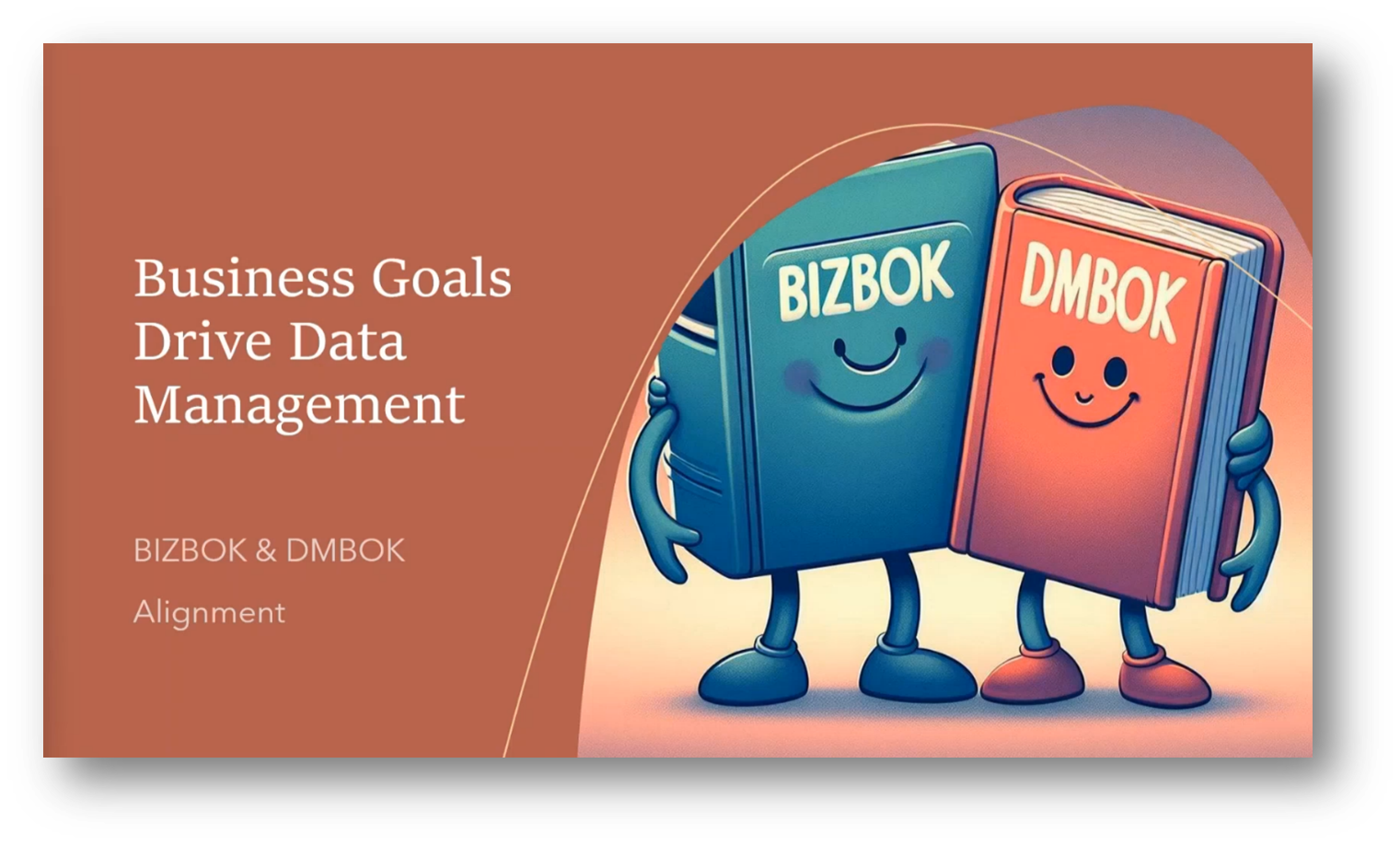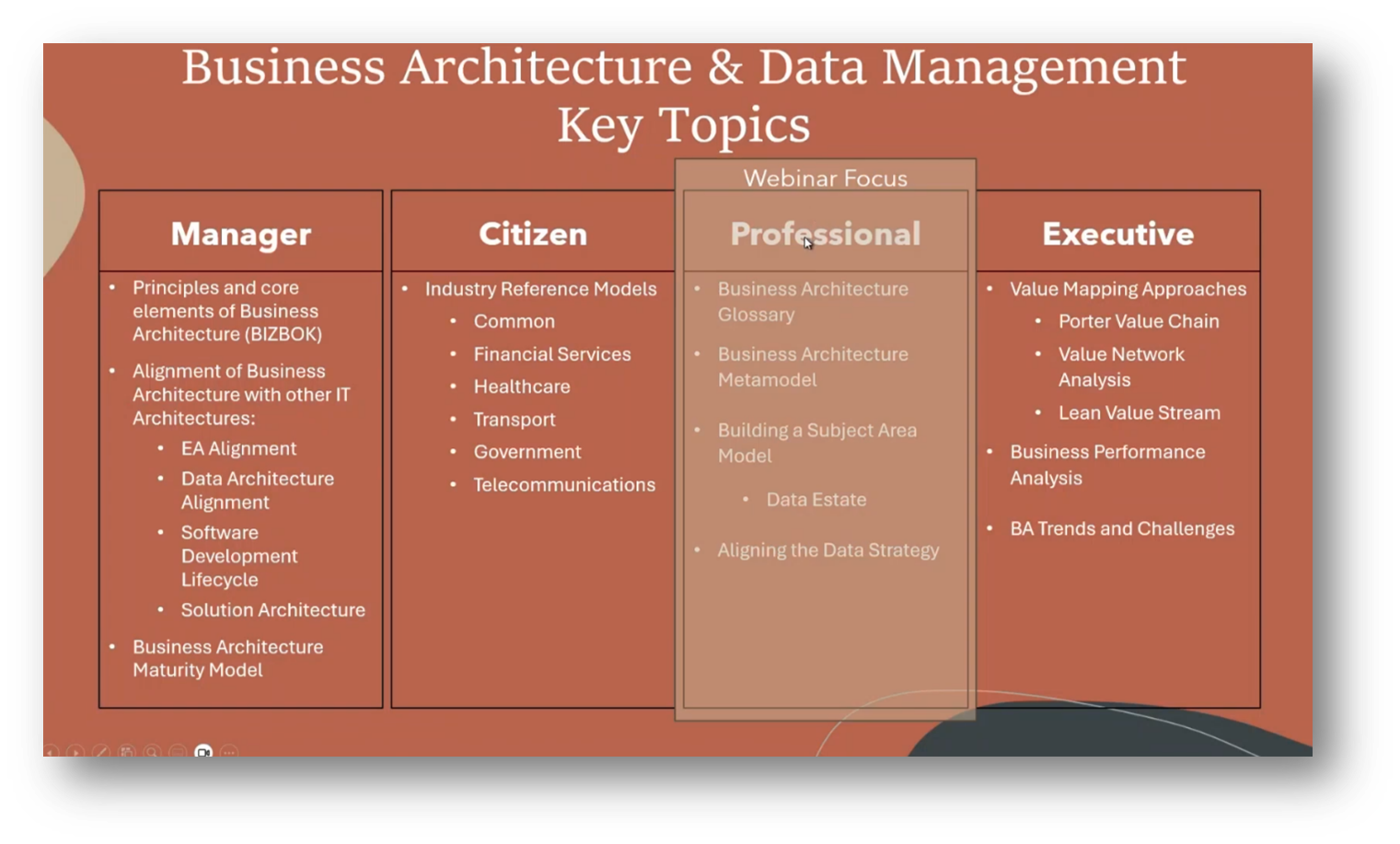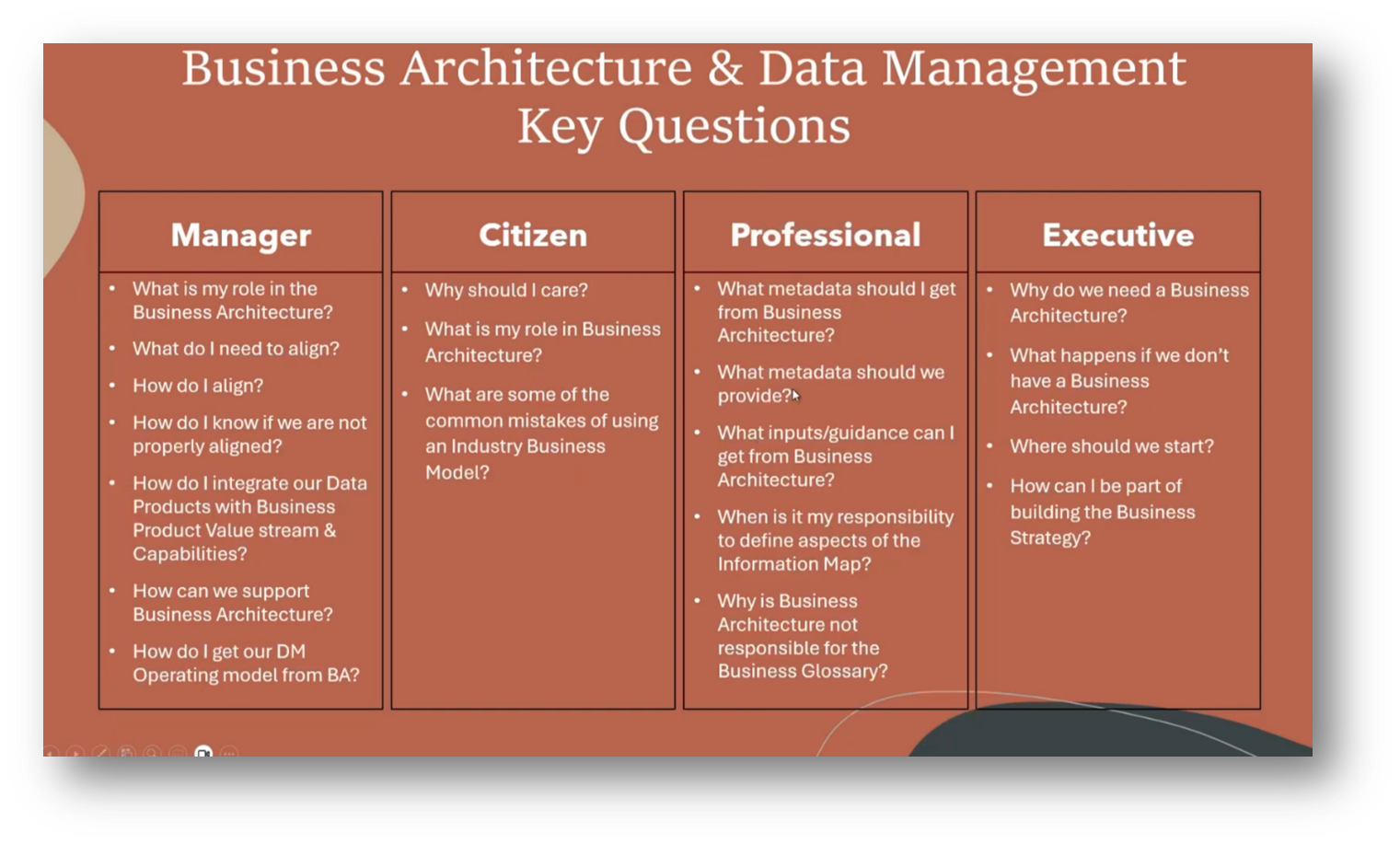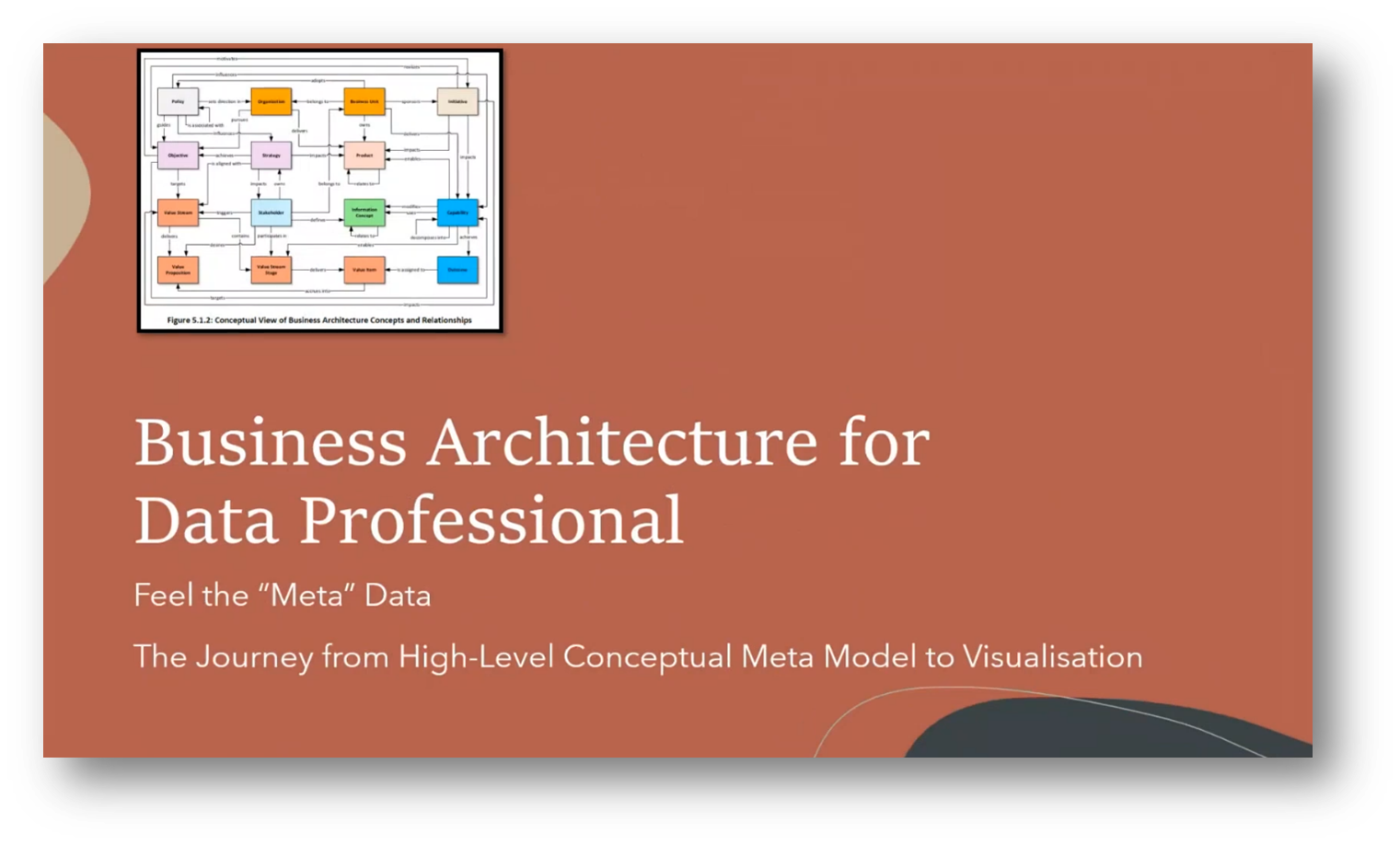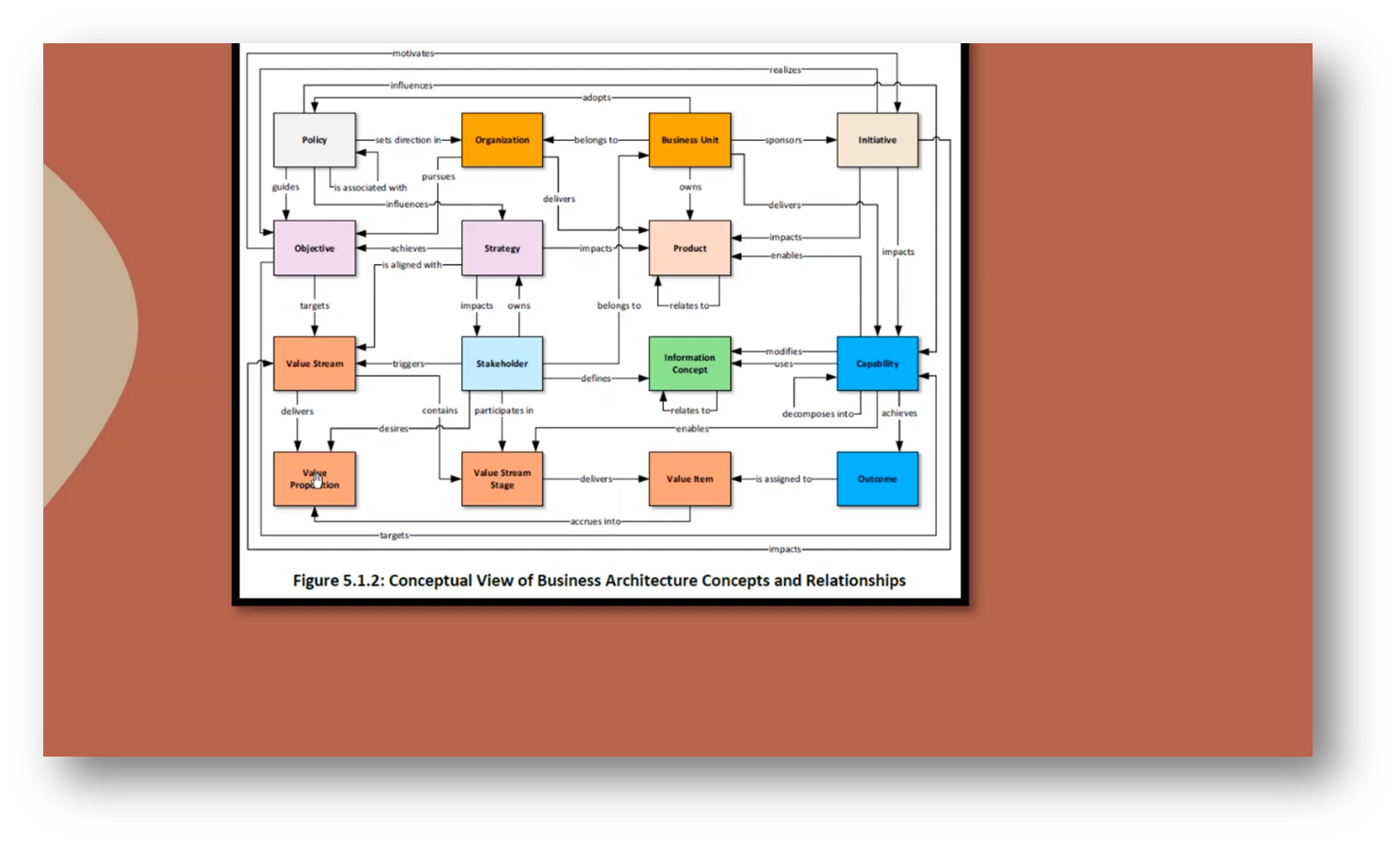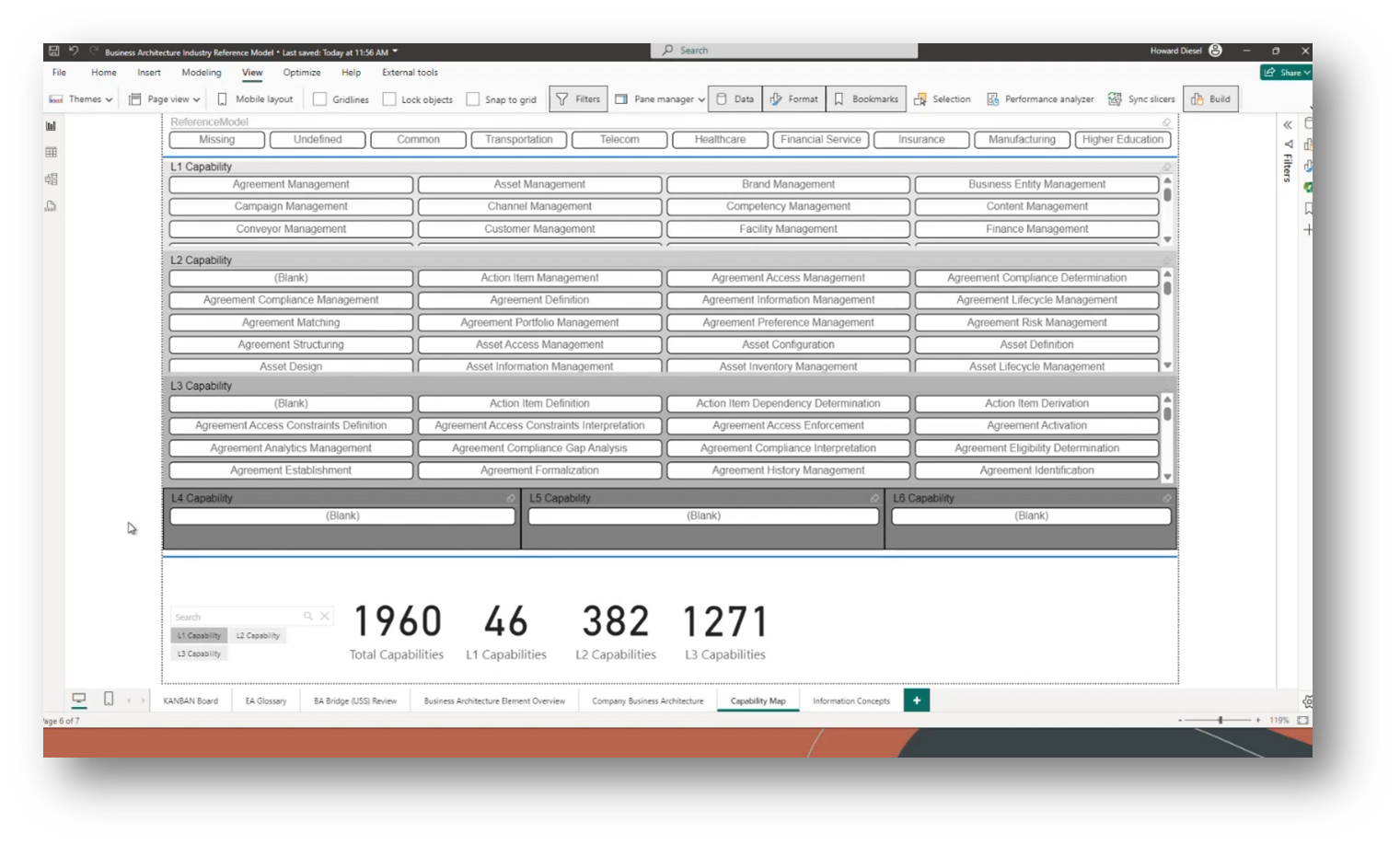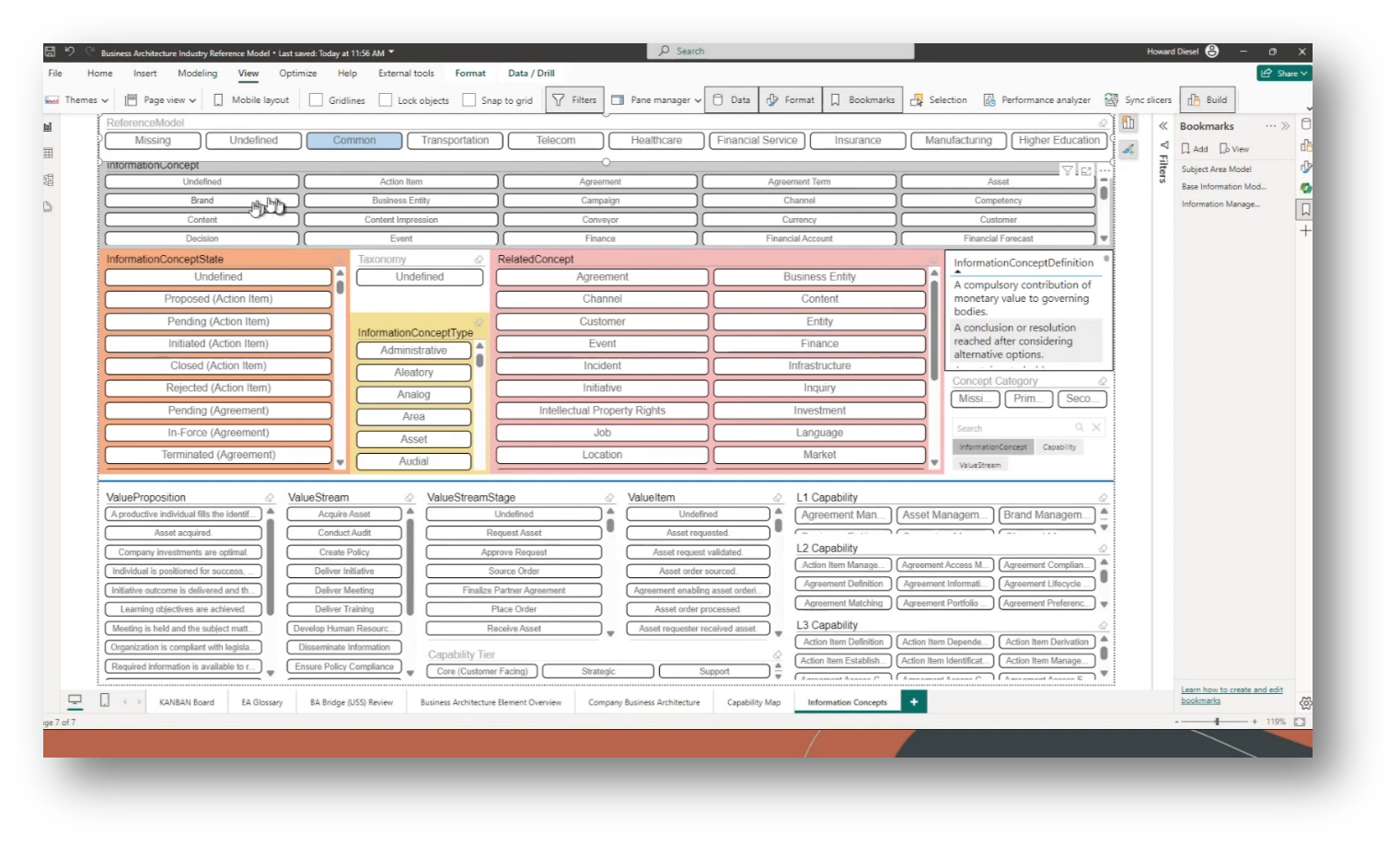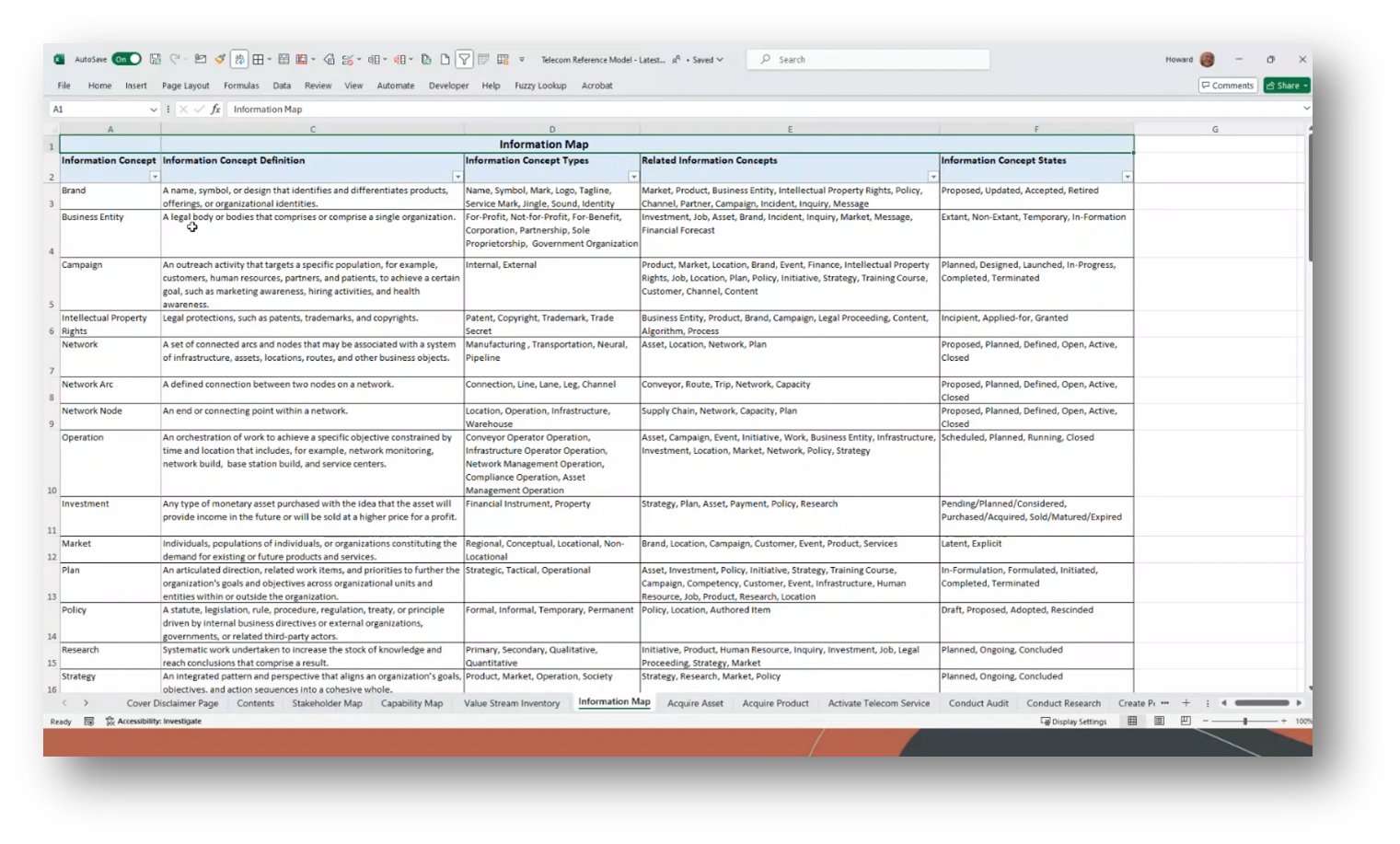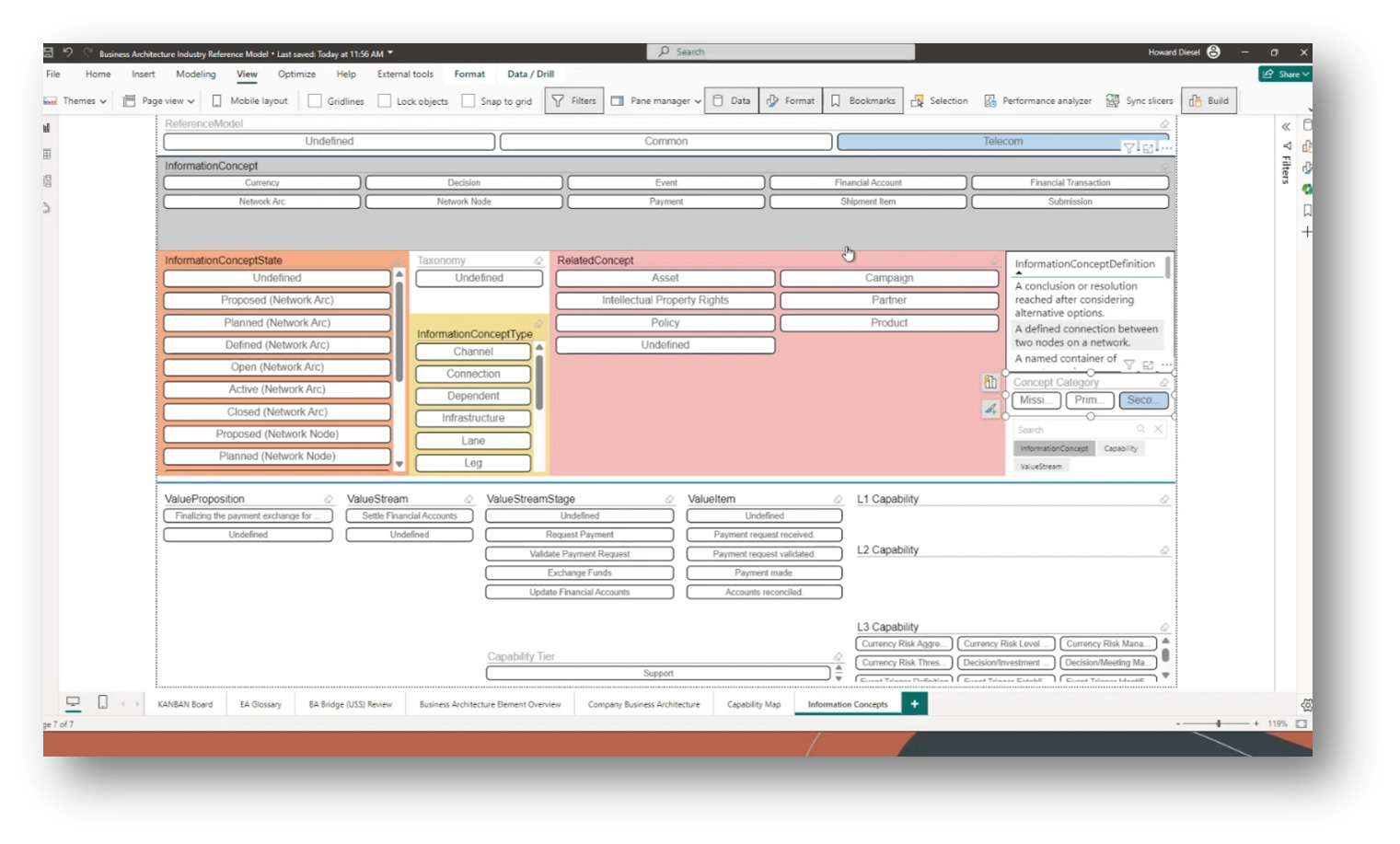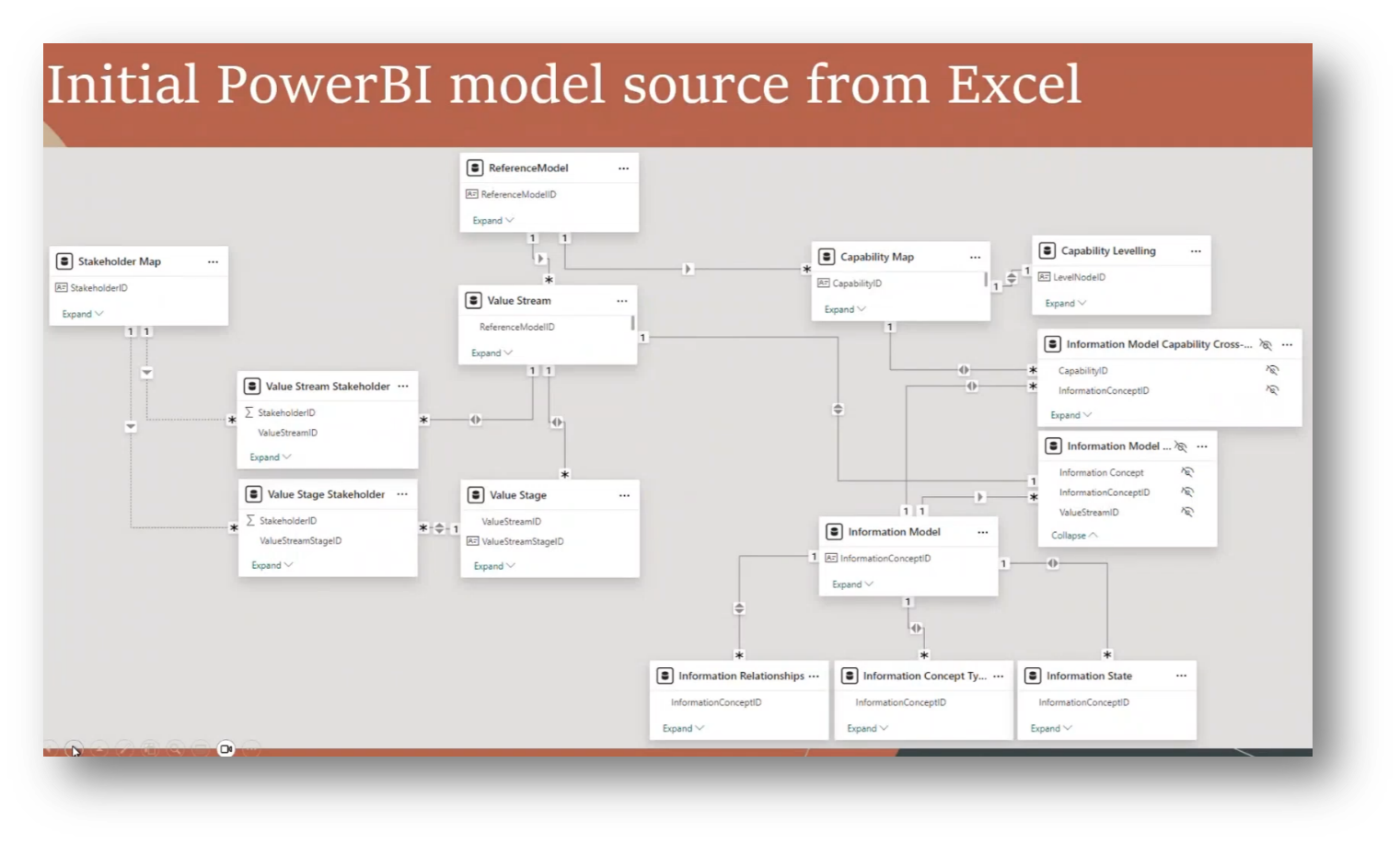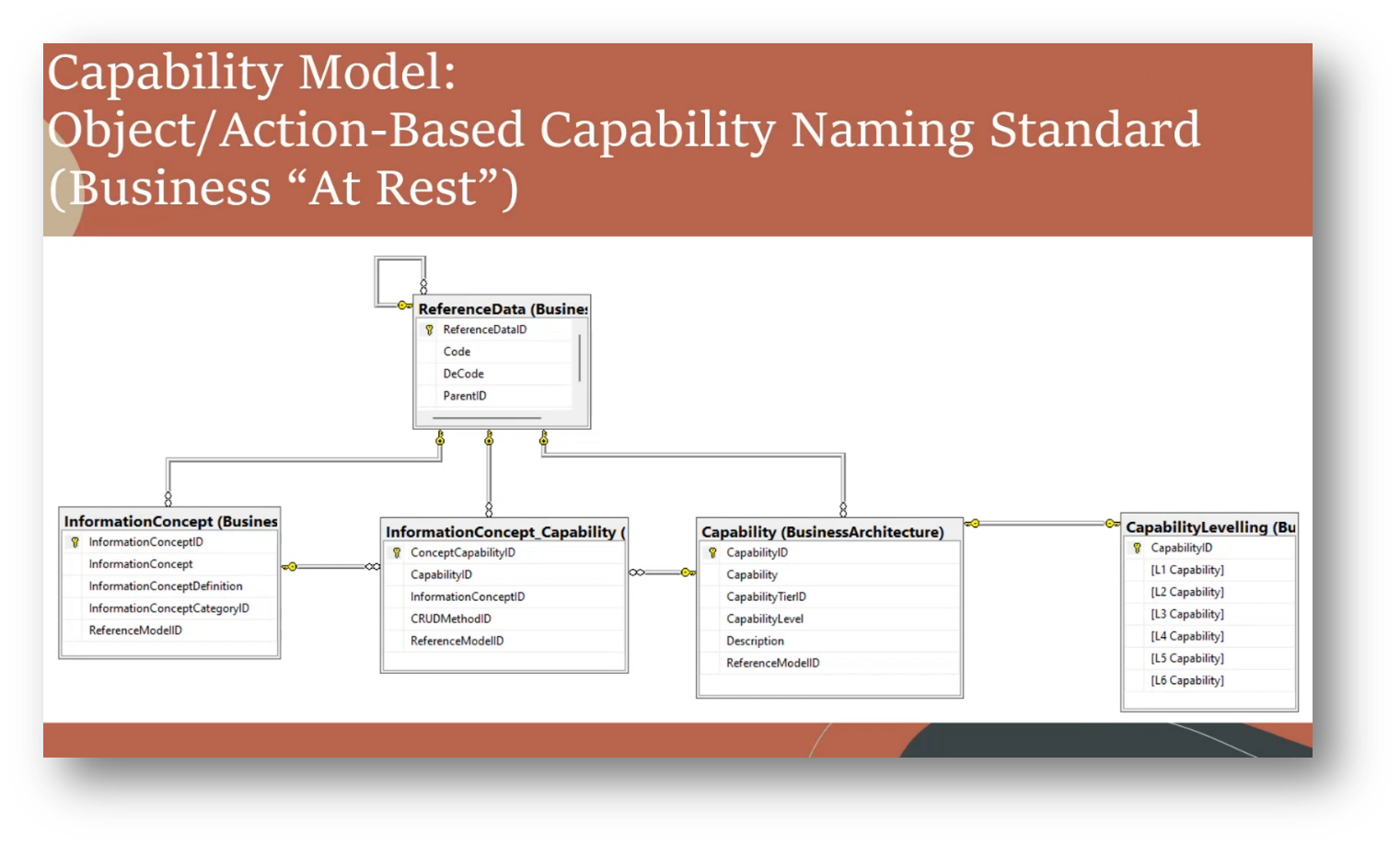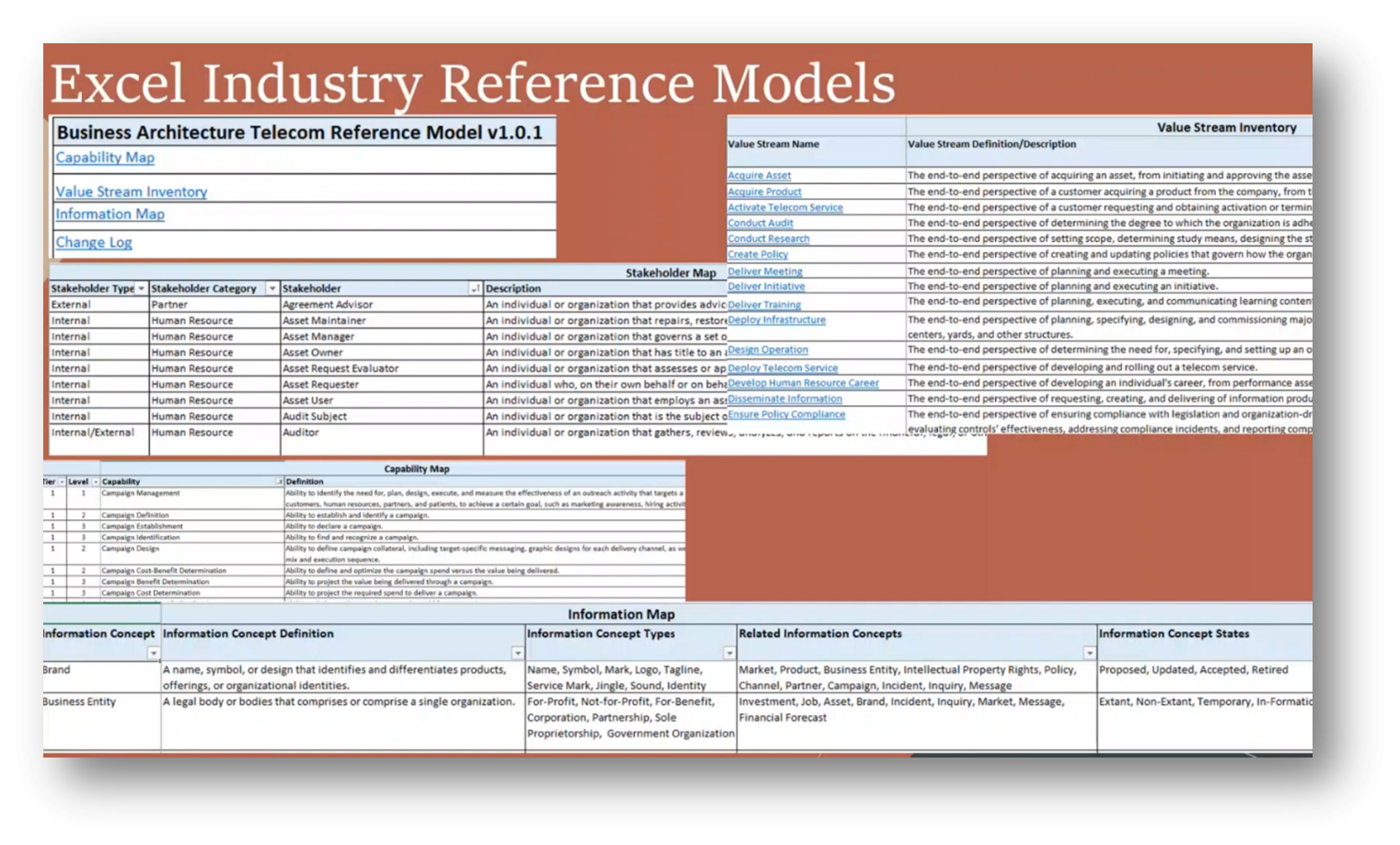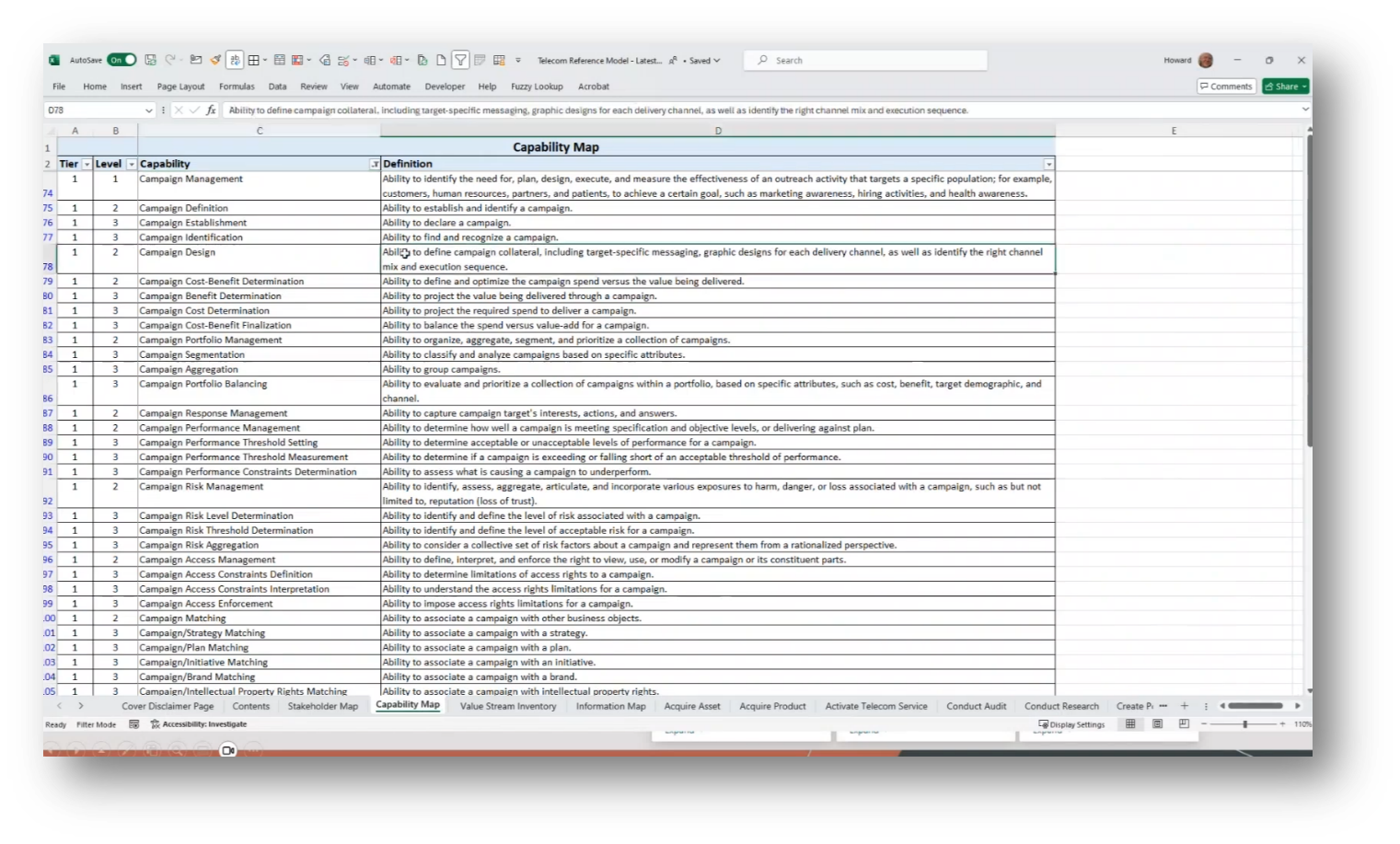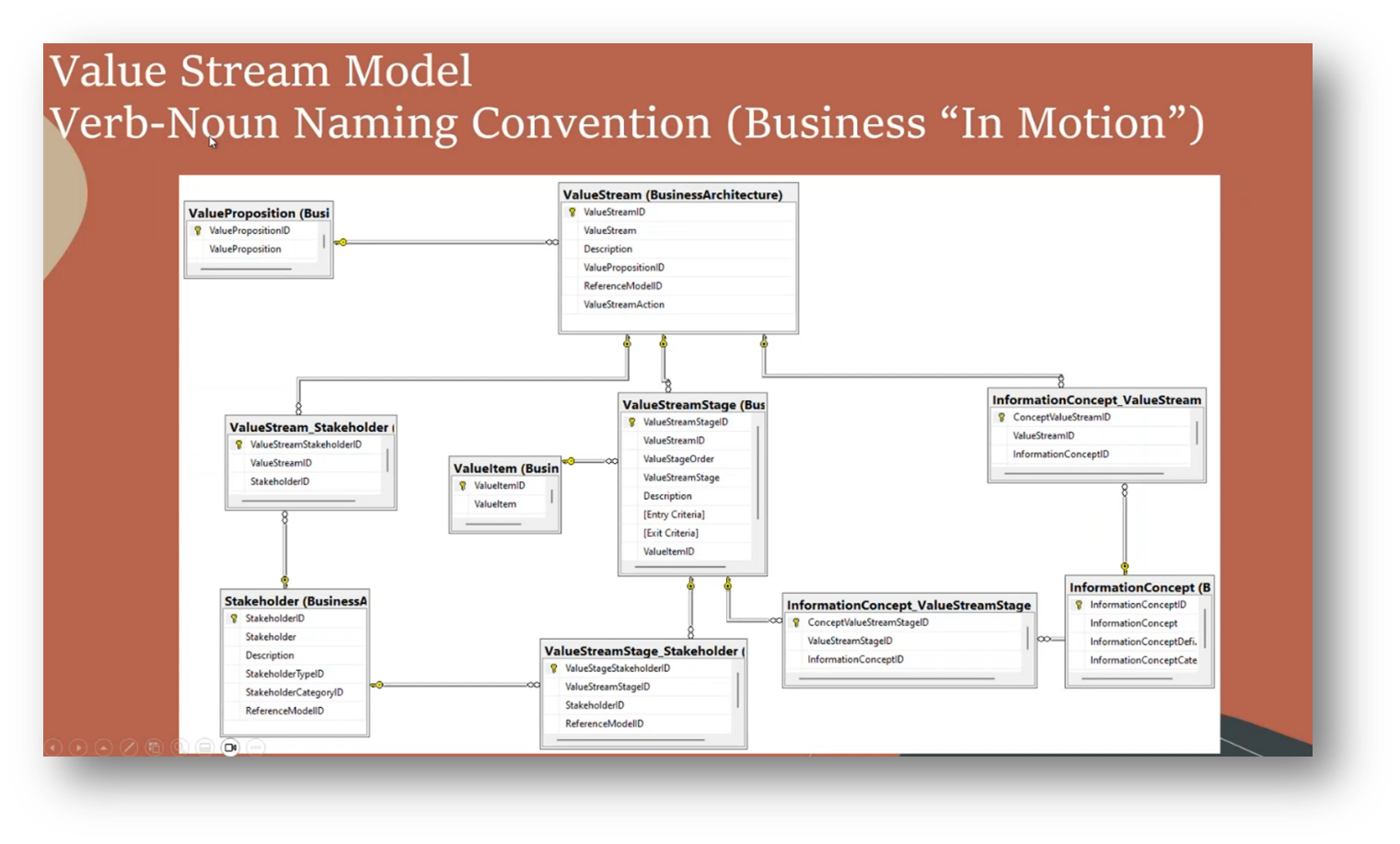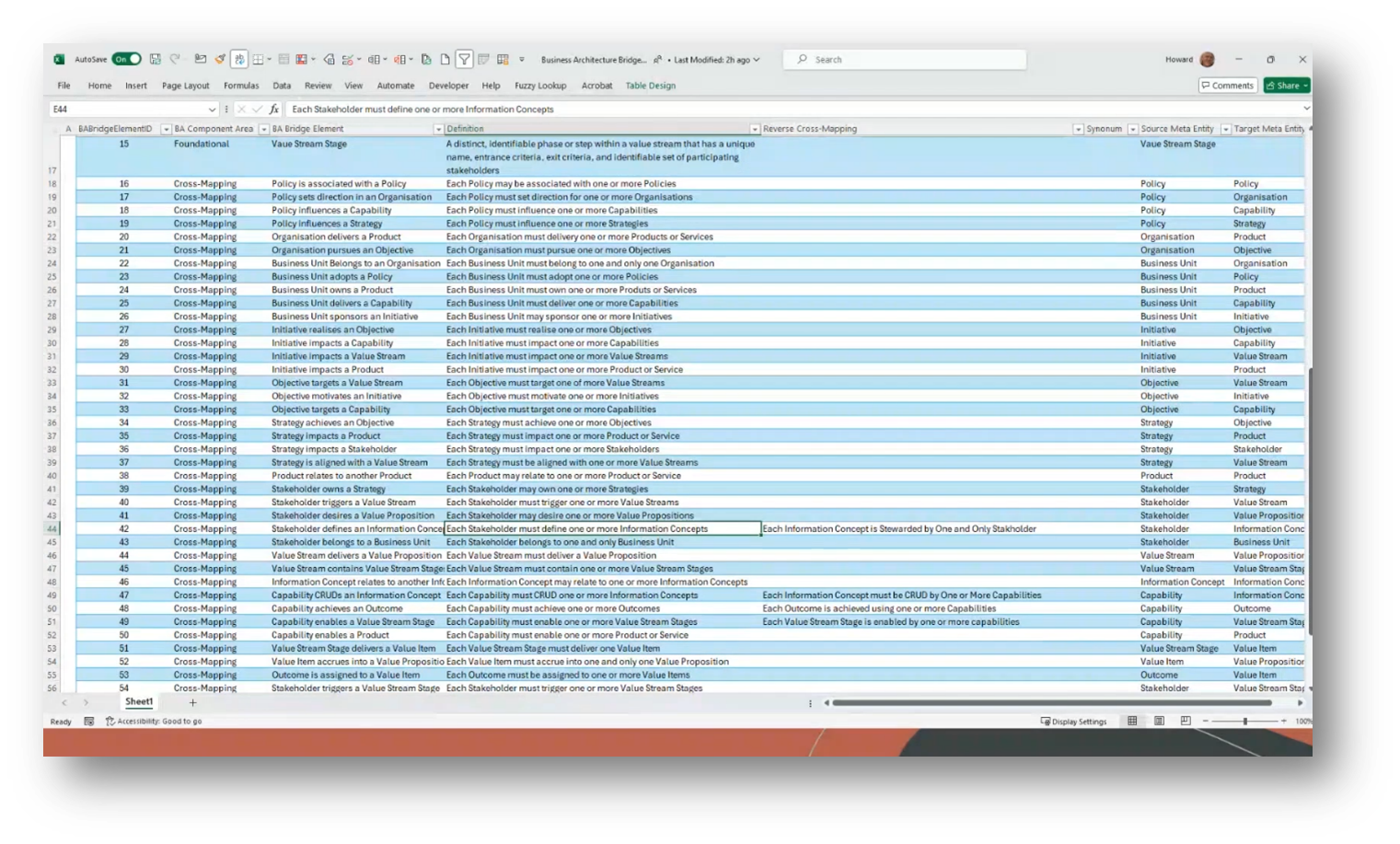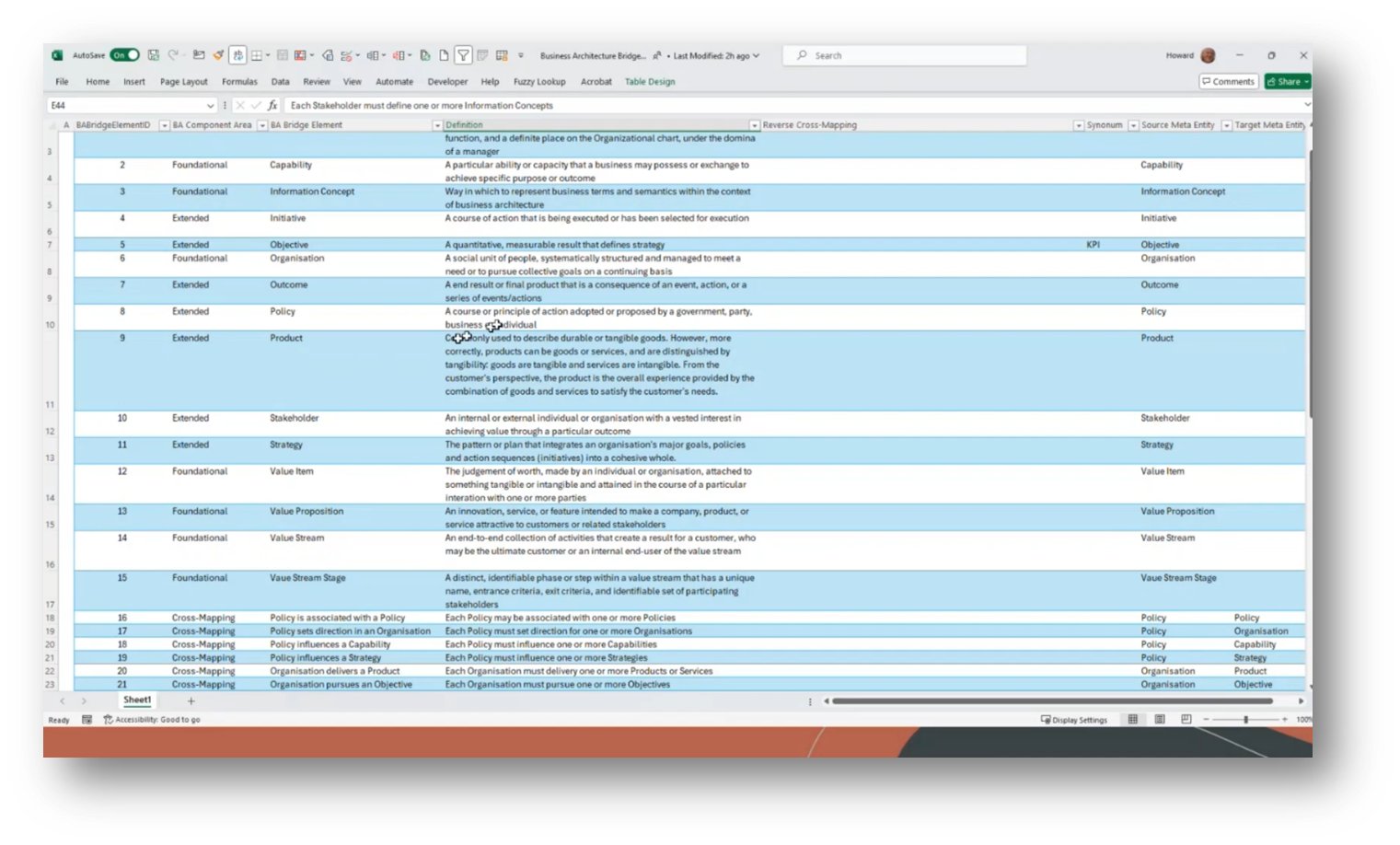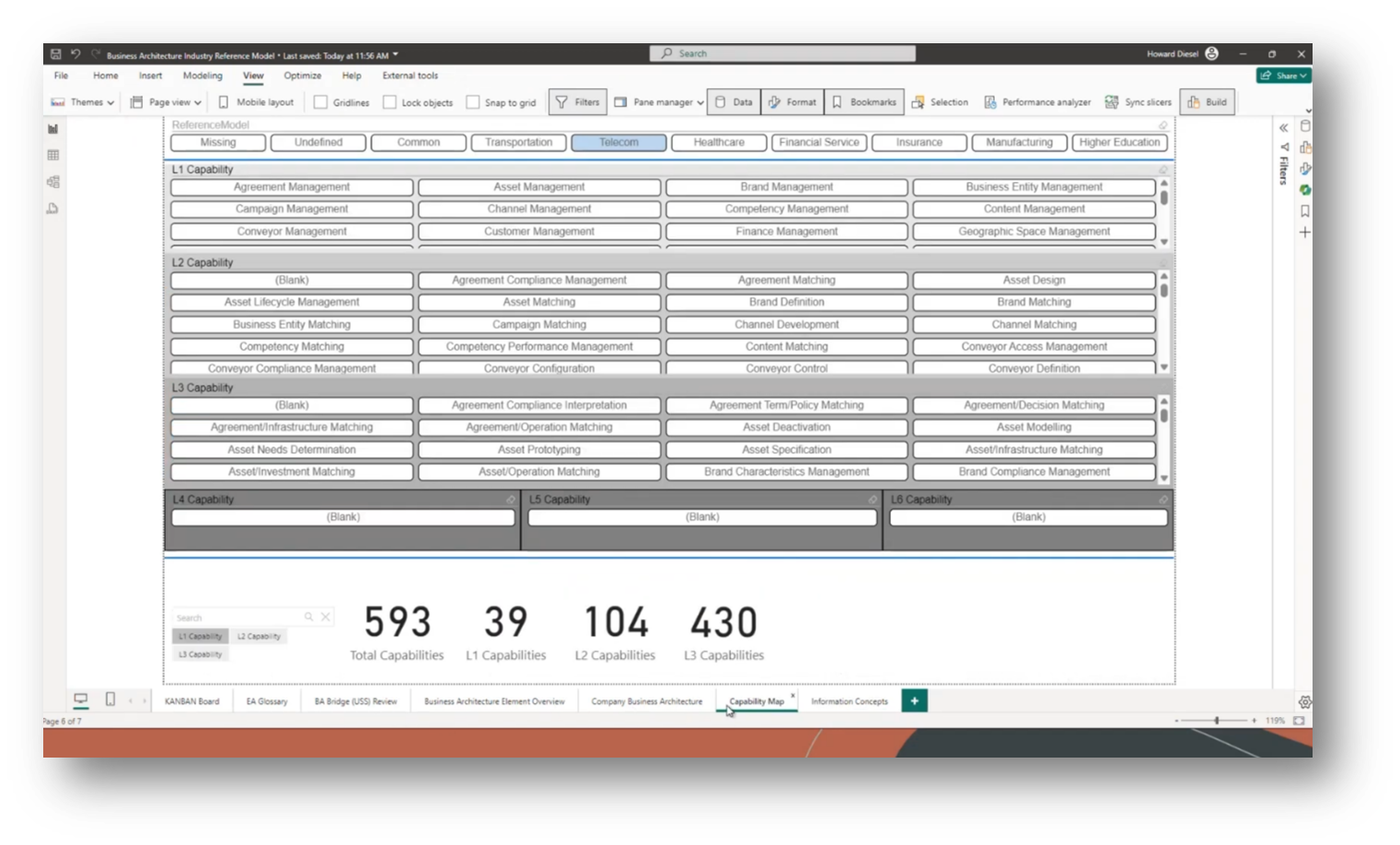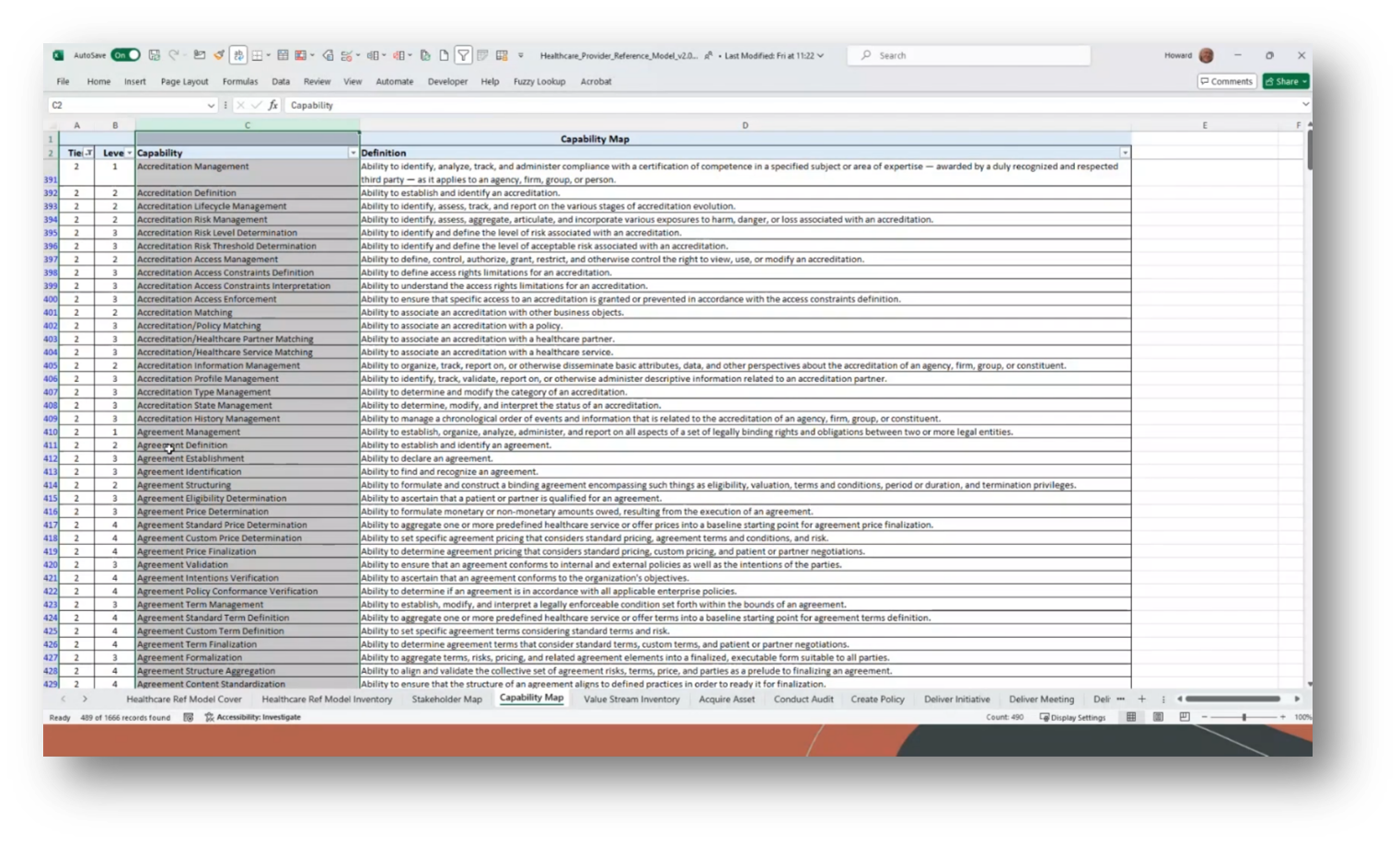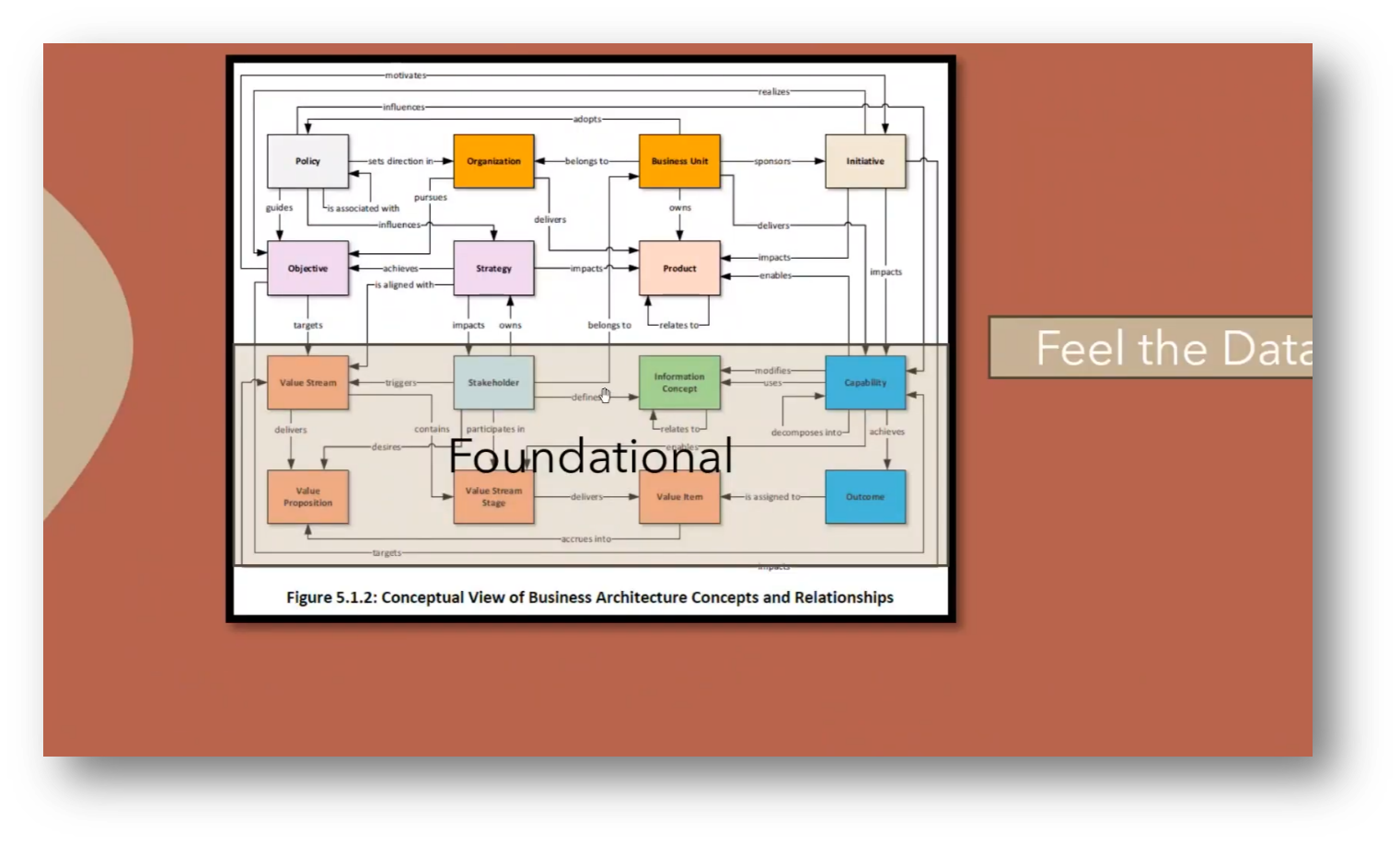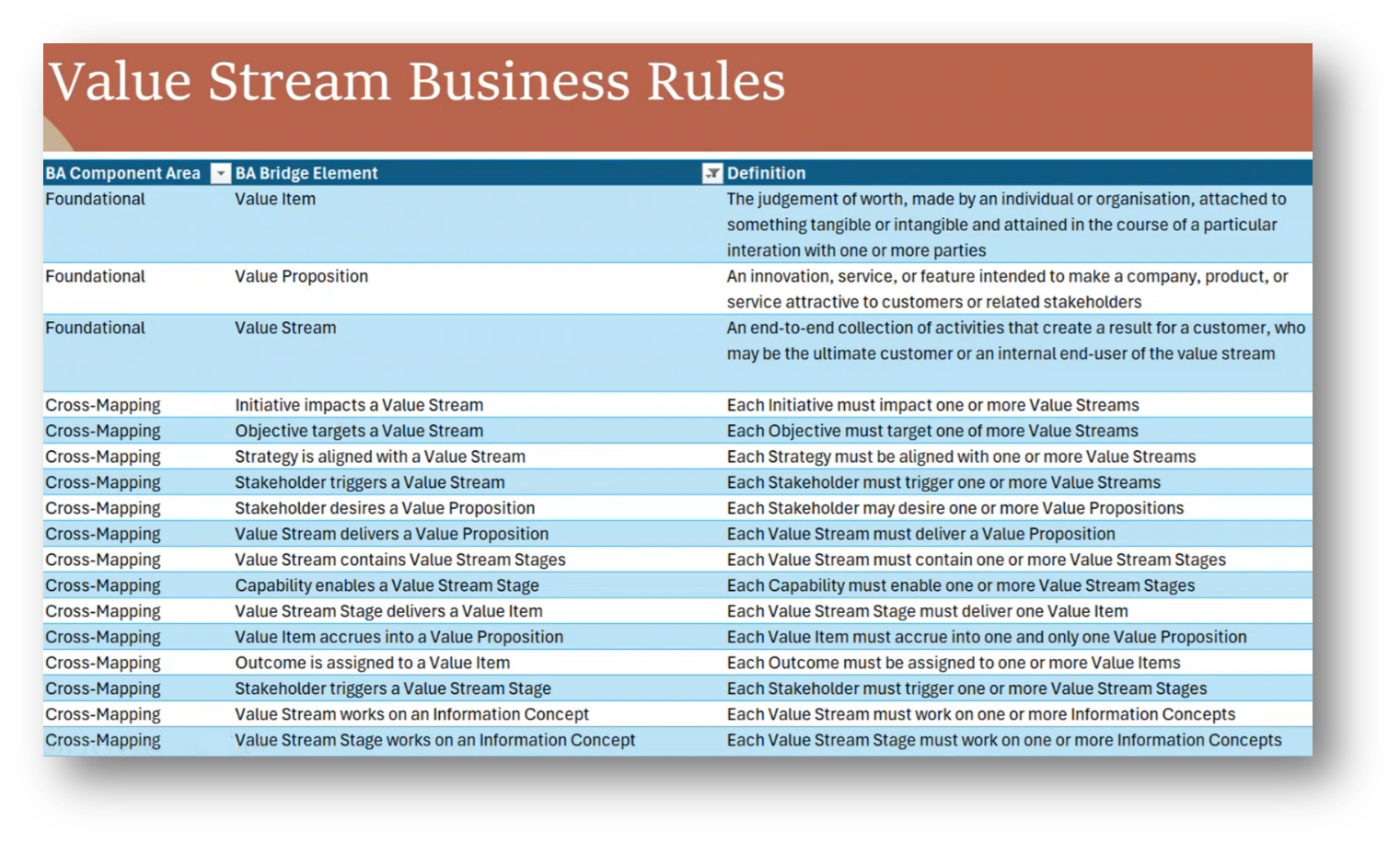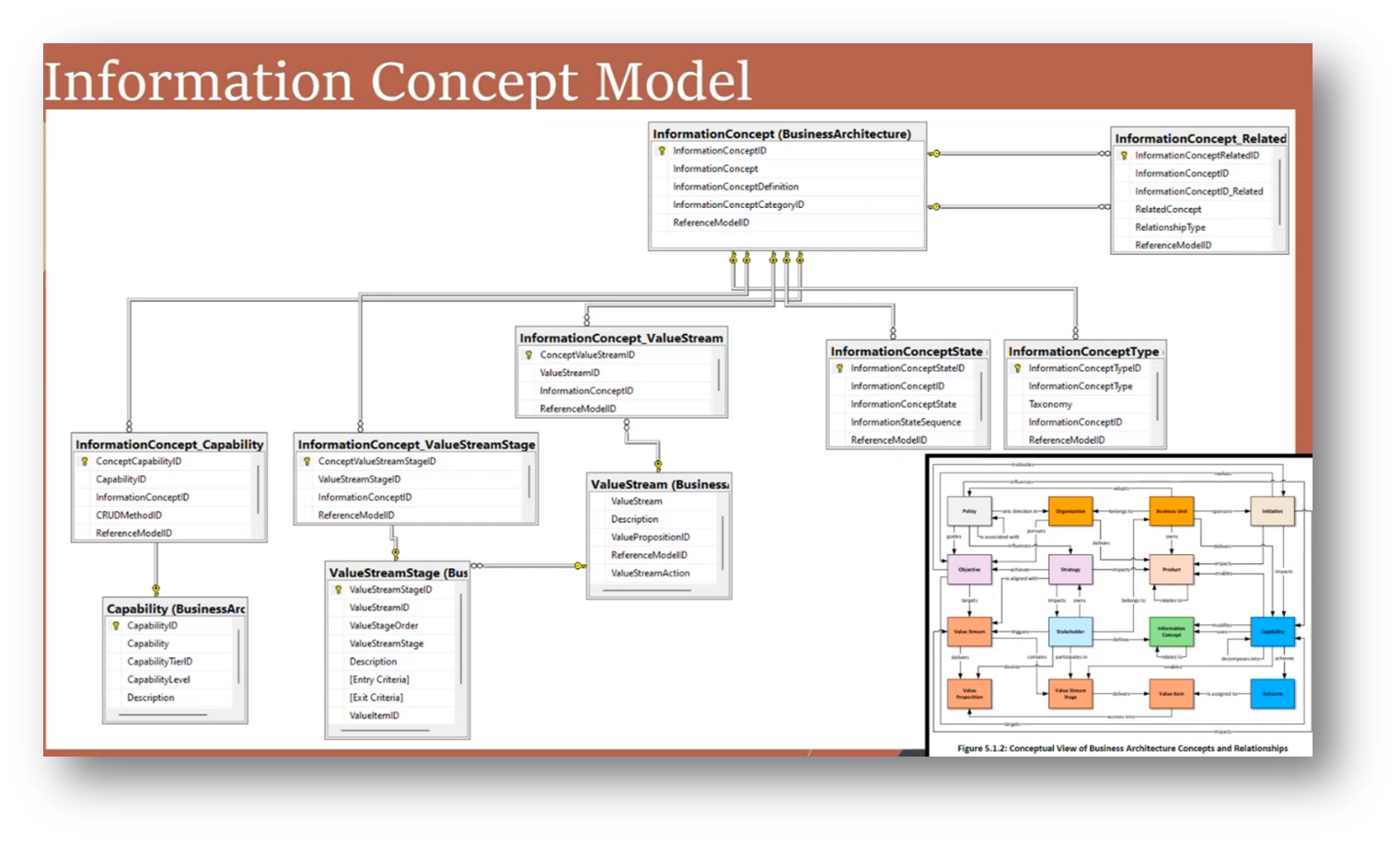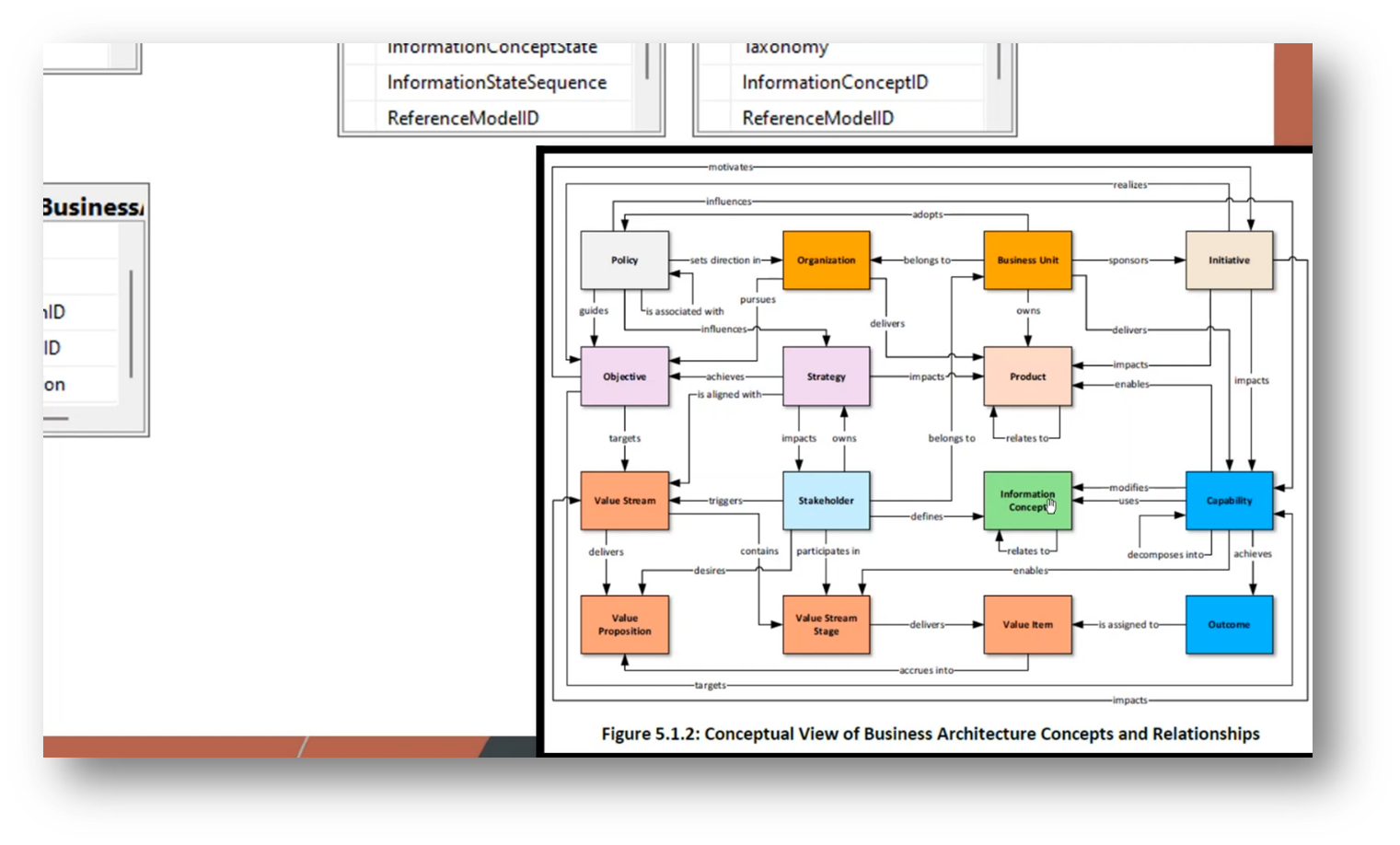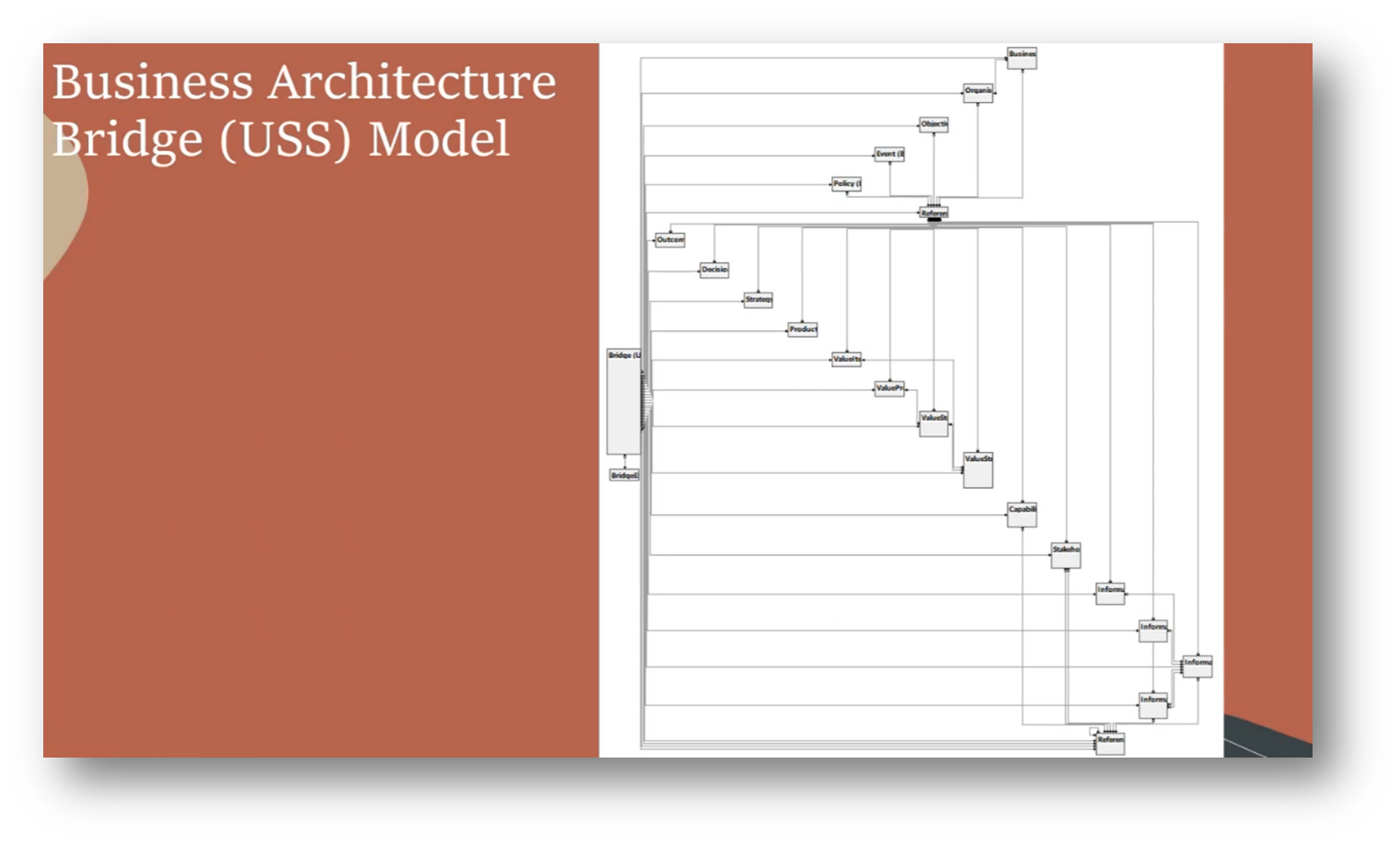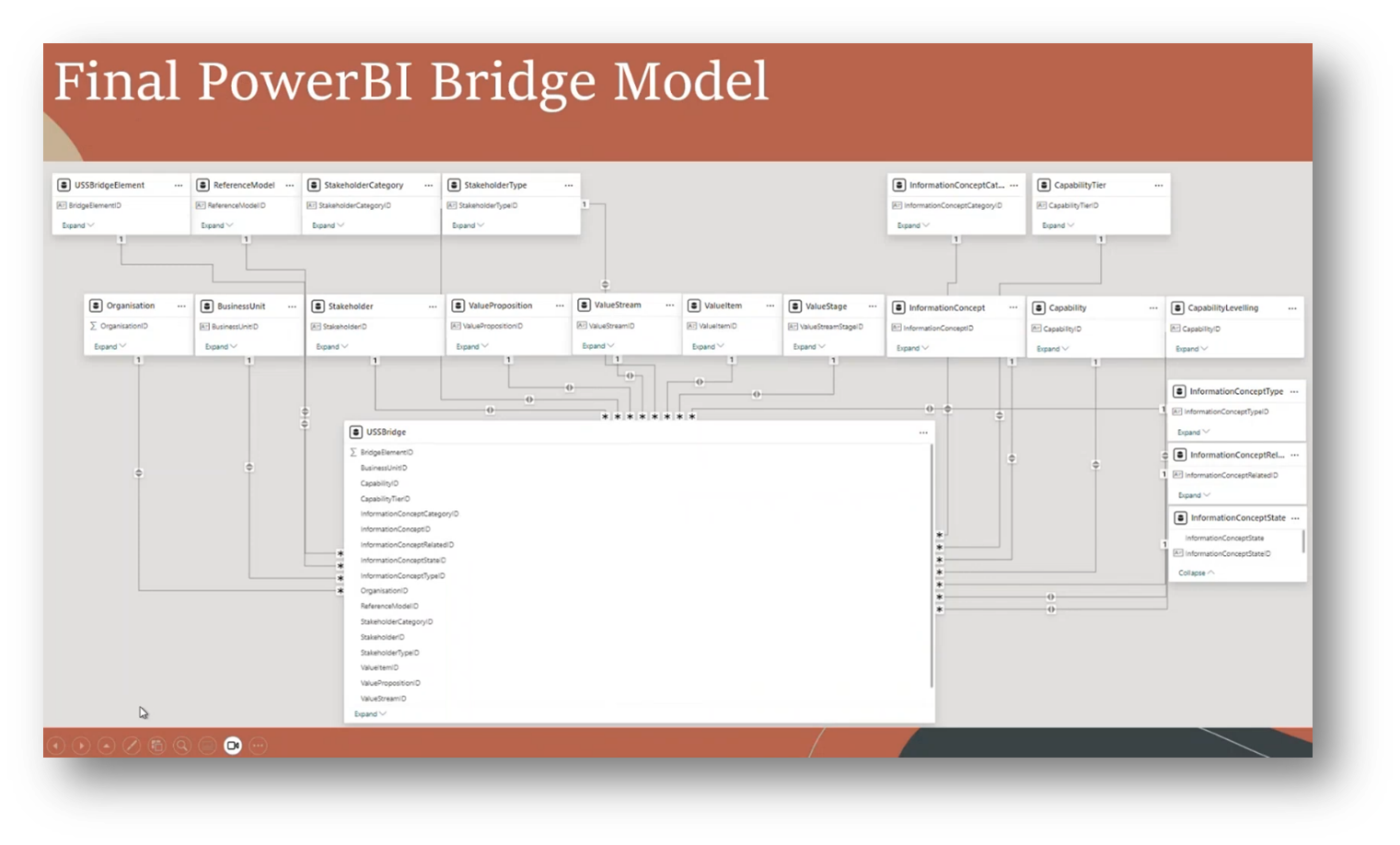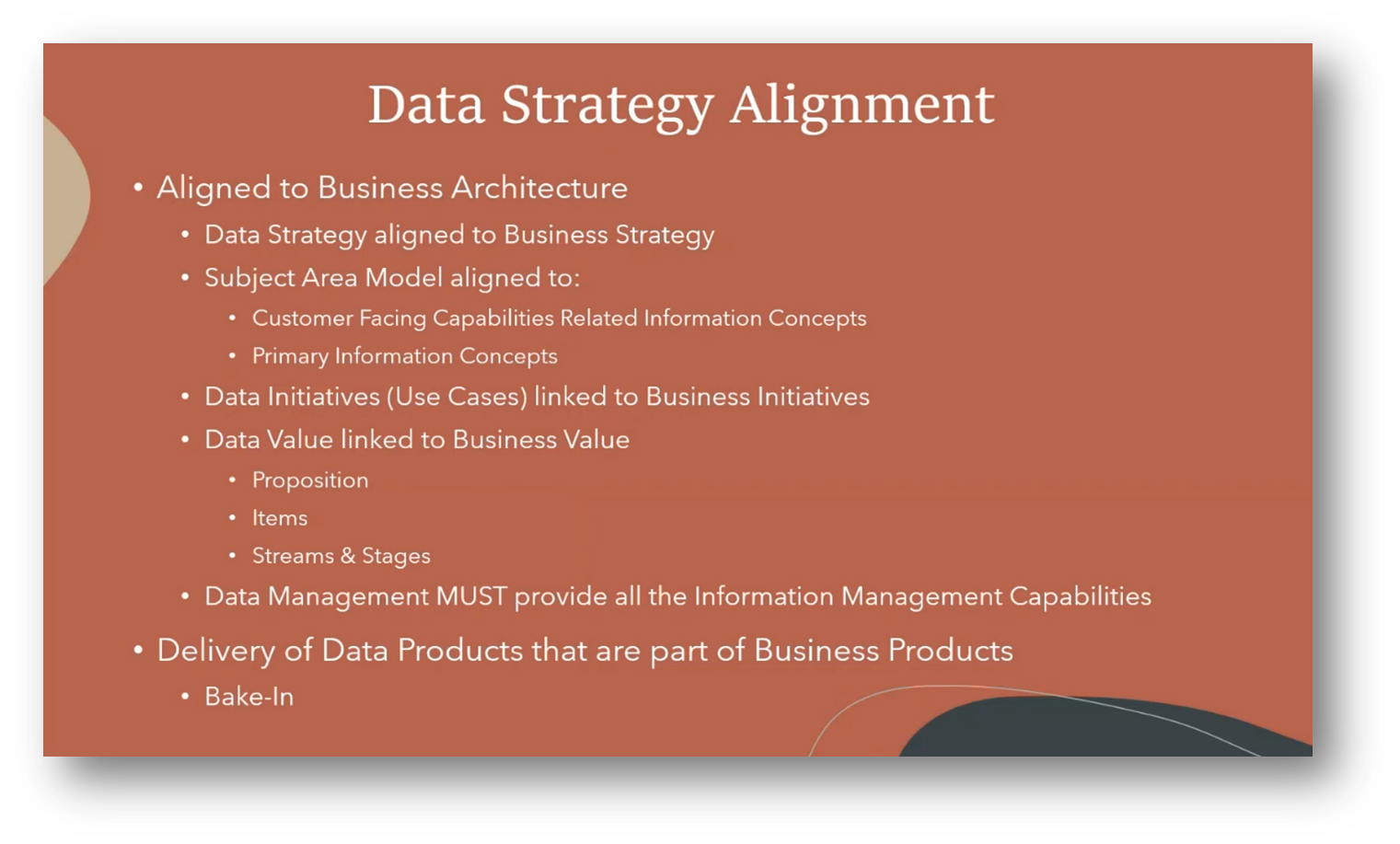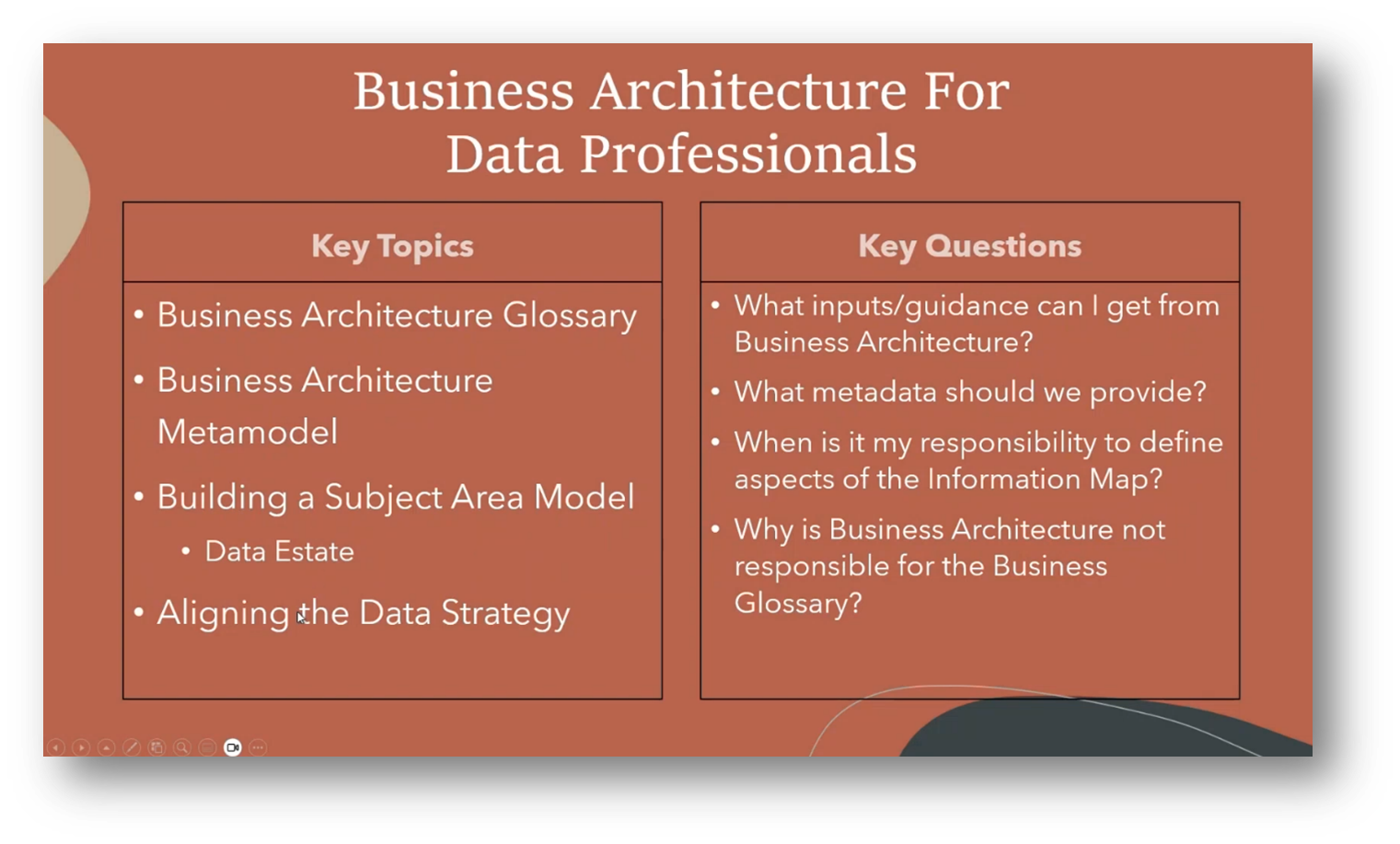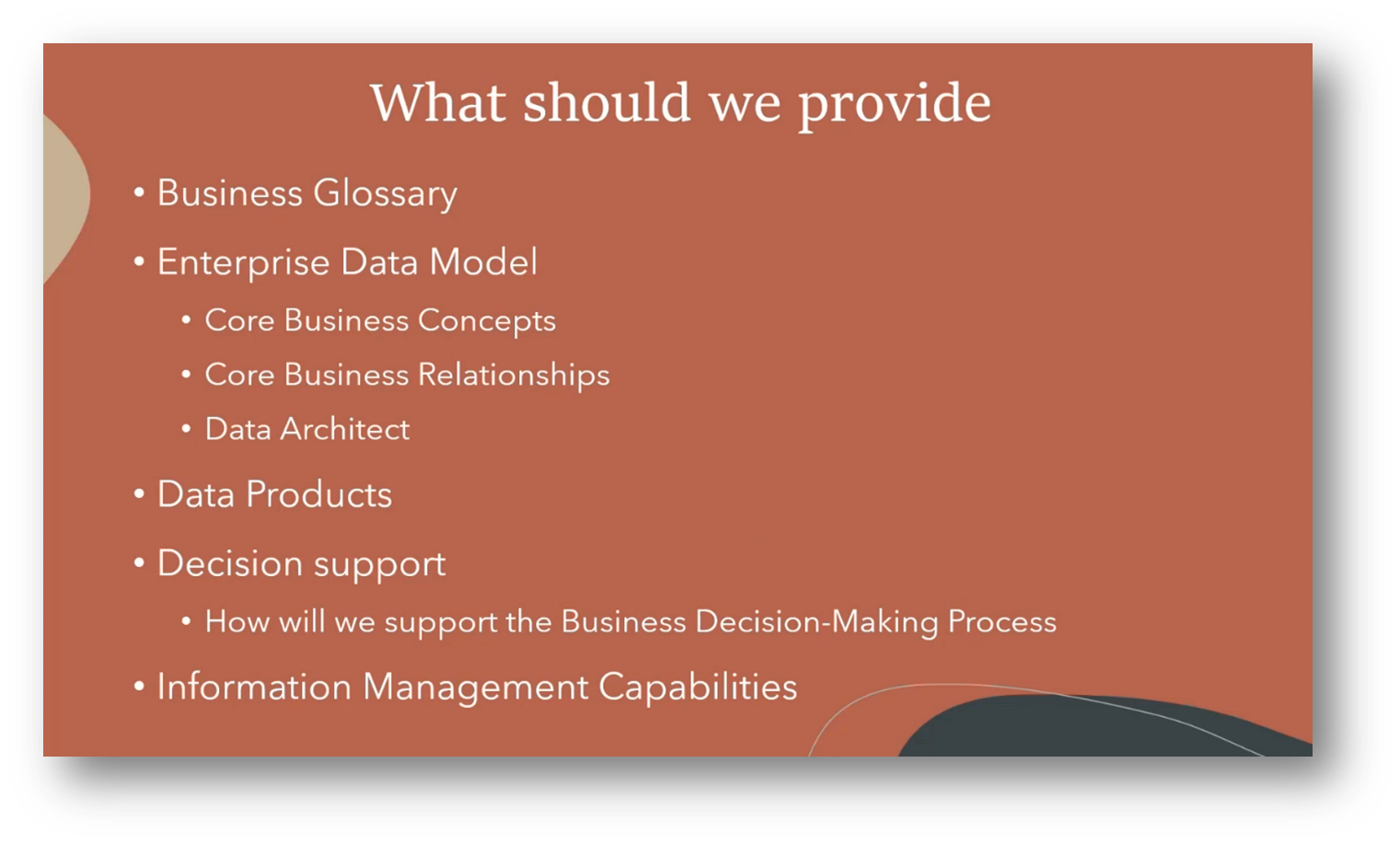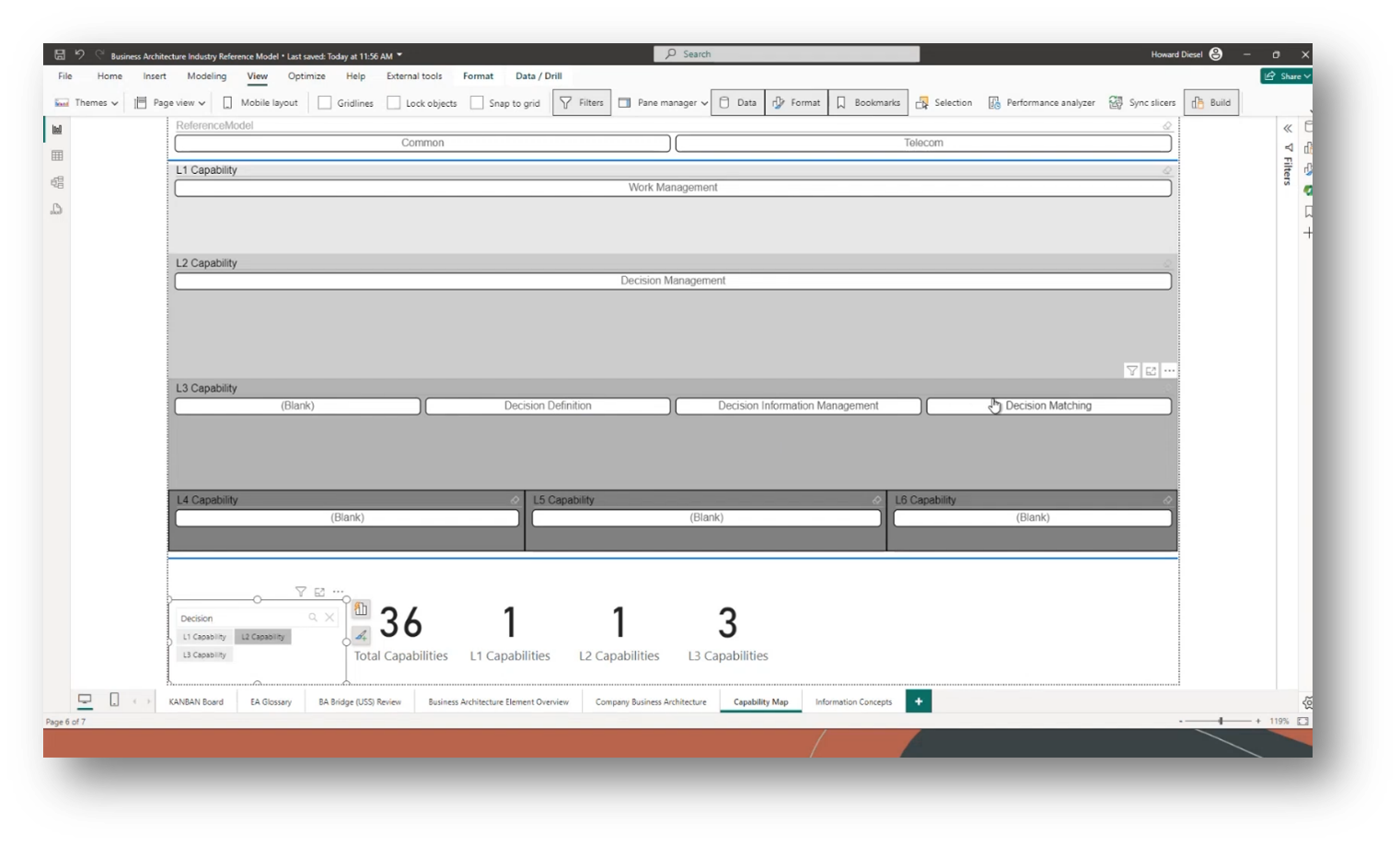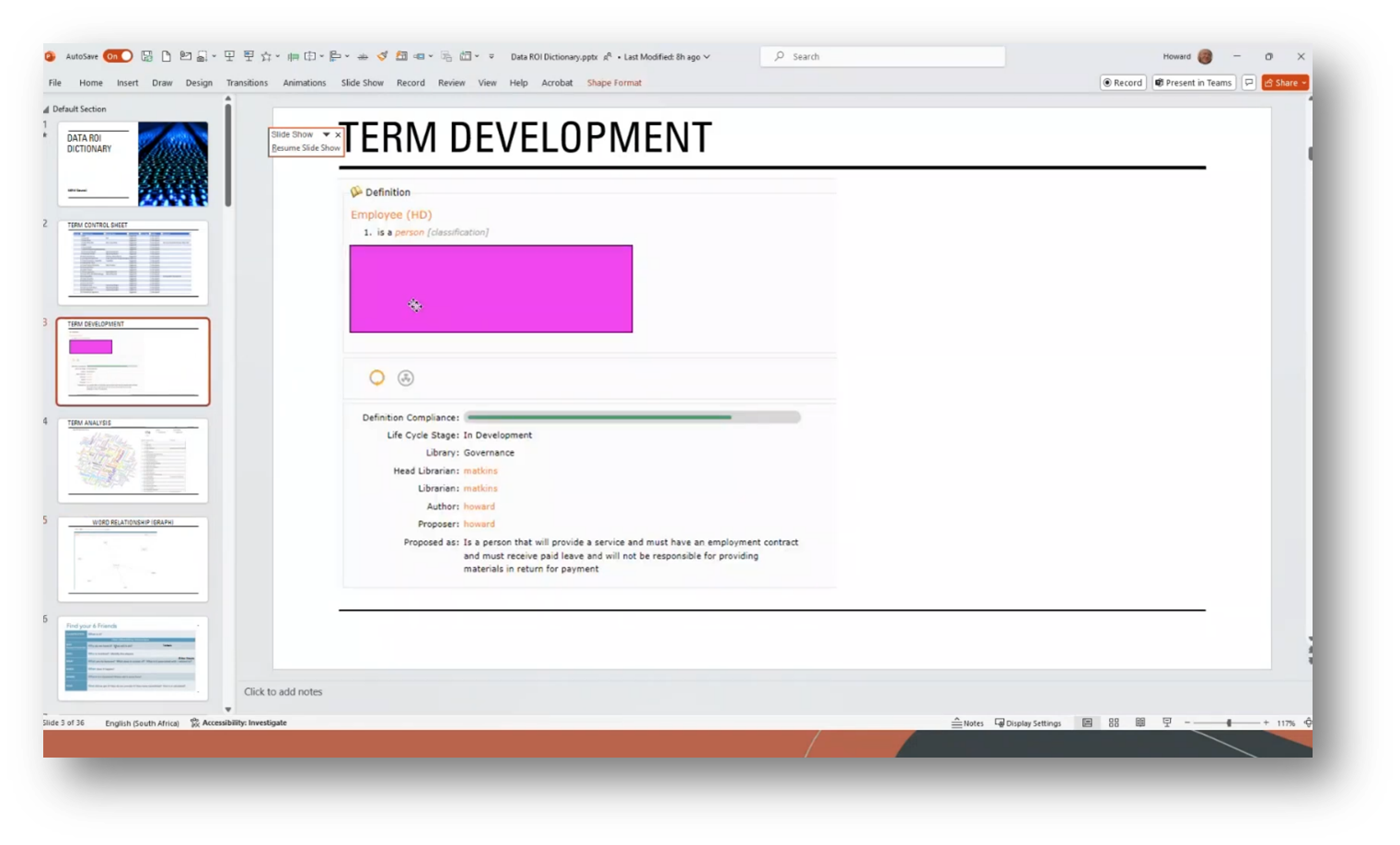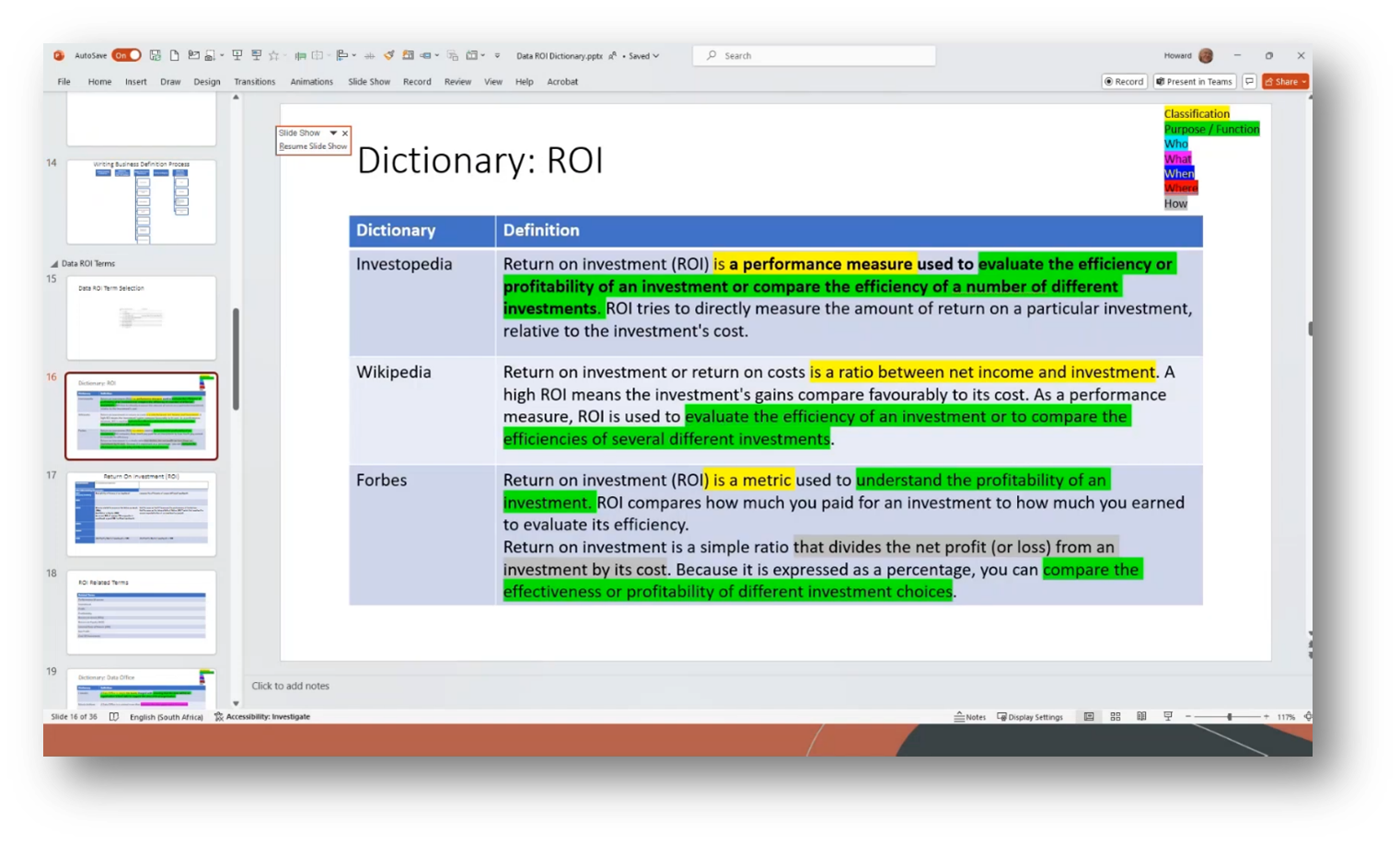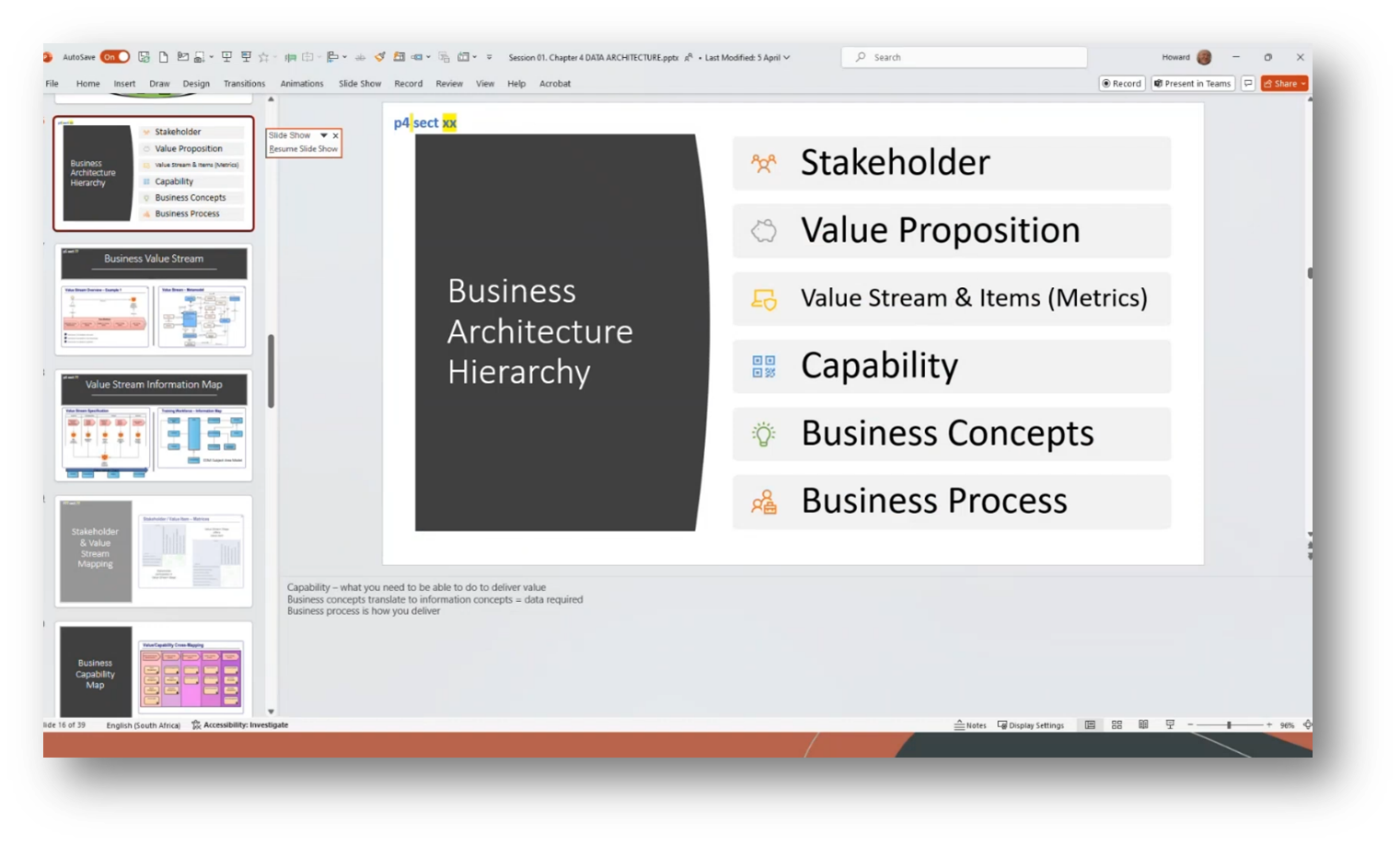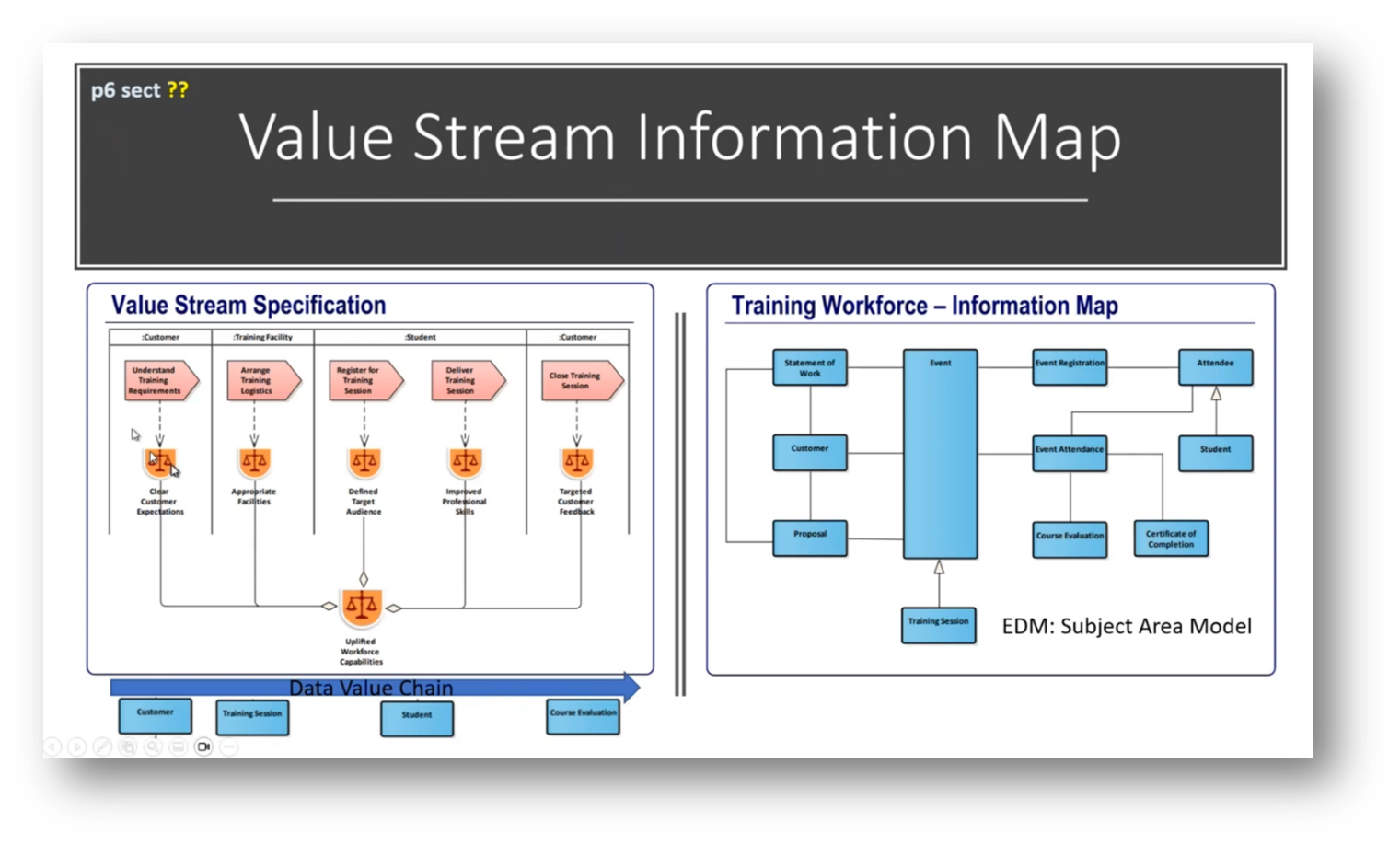Business Goals Drive Data Management for Data Professionals
Executive Summary
The alignment of Business Architecture and Data Strategy is critical for success in today's data-driven world. Understanding the importance of Business Architecture for data professionals and the relationship between Business Architecture and data analysis is essential. Industry reference models, conceptual frameworks, and business process vs. capability are all integral components that contribute to this alignment.
This webinar covers the value streams, data modelling, and proposition, and the significance of Business Architecture in the data world cannot be overstated. Data Management, Governance planning, decision management, and Information Management are also crucial aspects that must be carefully considered. With an emphasis on healthcare capability mapping and balancing scorecards with KPIs, this comprehensive approach ensures that data professionals can make informed, strategic decisions that align with the overarching Business Architecture and Data Strategy.
Webinar Details:
Title: Business Goals Drive Data Management - Professionals
Date: 5 June 2024
Presenter: Howard Diesel
Meetup Group: African Data Management Community Forum
Write-up Author: Howard Diesel
Contents
Exploring Business Architecture and Data Strategy Alignment
Importance of Business Architecture and Data Strategy
Business Architecture for Data Professionals
Importance of Understanding Business Architecture in Data Analysis
Industry Reference Model and Data Structure
Conceptual Framework and Data Modelling
Business Process vs Business Capability
Government Subject Area Model Alignment
Business Architecture and Information Management
Data Management and Business Architecture
Healthcare Capability Mapping
Business Architecture and Data Modelling
Value Streams and Propositions
Data Loading and Modelling in PowerBI
Data Strategy Alignment
Importance of Business Architecture in the Data World
Data Management and Governance Planning
Decision Management and Information Management
Business Definition Course and Conceptual Modelling
Business Architecture Guild and Value Stream Analysis
Exploring Business Architecture and Data Strategy Alignment
Howard Diesel opens the webinar and shares that the focus of the series is on aligning the Business Architecture Body of Knowledge (BIZBOK) and the Data Management Body of Knowledge (DMBOK). He goes on to share that it will emphasise the importance of establishing a Business Strategy before developing a Data Strategy. Without a well-defined Business Architecture, the business direction may lack clarity, hindering progress. Data professionals are encouraged to leverage the glossary of Business Architecture to grasp essential terms and concepts. Moreover, we will explore the transition from "value chain" to "value stream" in the Business Architecture and discuss methods to enhance the Business Architecture meta-model by adding more detail.
Figure 1 Business Goals Drive Data Management Webinar Cover Image
Figure 2 "Business Architecture & Data Management"
Figure 3 Key Topics
Importance of Business Architecture and Data Strategy
In Business Architecture, it's crucial not to rely solely on a single reference model as it can limit the company's operations. Creating a starting point for the subject area model or data estate and aligning the Data Strategy is essential. This webinar will focus on value mapping, value chain, and value network analysis to understand partners, relationships, and value streams. Howard notes that the questions to address include the type of metadata to be obtained from Business Architecture, the guidance it can provide for defining aspects of the information model and information map, and why Business Architecture isn't responsible for the Business Glossary. Additionally, Data Governance is responsible for the Business Glossary, and training will cover the reasons for this responsibility.
Figure 4 Key Questions
Figure 5 "Business Goals ARE the DM Drivers"
Business Architecture for Data Professionals
The high-level meta-model comprises strategy, projects, information concepts, stakeholders, value streams, value propositions, initiatives, and outcomes. Data initiatives should align with business objectives, value streams, and value propositions to enhance product value. Integrating data products into business products is a key strategy for enriching the value of the business's offerings, creating a seamless relationship between the two. Howard shifts the focus to the foundational elements of the meta-model, referred to as extended elements. It’s crucial to understand metadata deeply, a concept exemplified by Steve Hoberman as "feeling the data". This emphasises the significance of truly comprehending the data.
Figure 6 Business Architecture for Data Professional
Figure 7 Conceptual View of Business Architecture and Relationships
Importance of Understanding Business Architecture in Data Analysis
Howard goes on to stress the importance of cultivating a "feeling for the metadata from Business Architecture" to construct a data dashboard effectively. He demonstrates the functionality of Power BI in filtering and searching for specific capabilities related to Information Management within a comprehensive capability model.
An information model is presented, using a telecom reference to elucidate how to navigate and comprehend different information concepts within Business Architecture. Howard emphasises the significance of grasping Business Architecture before commencing any data analysis project. Howard underscores the ability to request and access a comprehensive list of the Business Architect's work.
Figure 8 Business Architecture for Data Professional
Figure 9 Capability Map
Figure 10 Information Concepts
Industry Reference Model and Data Structure
Howard notes a key takeaway: There is consistency of common elements across different industries, such as brand decisions, business entities, agreements, and value propositions. The information concept state taxonomy is structured based on an industry reference model, focusing on the Telco sector. The process involves consolidating value streams, aligning stakeholders through stakeholder maps, and creating join tables to ensure alignment.
Figure 11 More on Information Concepts
Figure 12 Information Map
Conceptual Framework and Data Modelling
Howard describes different tiers of capabilities—strategic, customer-facing, and supporting—and discusses common and domain-specific customer-facing concepts unique to specific businesses. He distinguishes between a system's primary and secondary concepts and explains using a "bridge table" in data modelling to track missing stakeholders, concepts, and capabilities. The bridge table helps identify and complete missing components in the data model by facilitating the understanding of how data elements relate. Additionally, it mentions APQC as a valuable resource for a conceptual framework and data modelling.
Figure 13 More on Information Concepts
Figure 14 "All tables"
Business Process vs Business Capability
The business hierarchy comprises stakeholder value proposition, value stream, capability, process, information concept, and organisational levels. Business capabilities are relatively stable, whereas processes are more subject to change based on efficiency. The value stream represents the active delivery of business value, while the capability focuses on what the business must do to deliver value. The Enterprise data model is best linked to a subject area model to account for the stability of capabilities and the volatility of processes. Utilising a reference model is crucial for developing a robust Data Strategy, making building a subject area model the suggested initial step.
Figure 15 Initial PowerBI Model
Figure 16 Capability Model
Government Subject Area Model Alignment
A practical example Howard gave came from his work with government organisations and ministries in Saudi Arabia, particularly a project to establish Data Management at the Authority for Industrial cities. Given the diverse subject areas within the government model, it is essential to ensure alignment with the Authority for Industrial Cities. Howard shares that this process requires time and effort to align subject area models with the government model. Excel provides a comprehensive telecom document containing capability and information maps.
The ultimate goal is to ingest every industry reference model to identify similarities and areas of data integration. However, attention is needed to address missing linkages between capability maps and information models, particularly in Excel naming conventions for capabilities and value streams. Adhering to naming conventions for capabilities and value streams in Excel facilitates establishing connections between various information concepts.
Figure 17 Excel Industry Reference Models
Figure 18 More on Capability Map
Figure 19 Value Stream Model
Business Architecture and Information Management
Understanding the hierarchy of capabilities is essential for fostering business relationships. Capabilities are tied to information concepts and are characterised by actions like creating, updating, deleting, or reading concepts, all stored in the Meta model. Comprehending the association and cross-mapping of business rules is vital for extracting core elements of the Business Architecture.
Principles and policies are interconnected, with policy definitions also encompassing principles. Information Management capabilities fall under the purview of Data Management within the Business Architecture, and each subject area model has an associated capability for Information Management across specific business areas and common practices. Data Management is pivotal in defining how concepts are managed and establishing a connection between the Data Strategy and the Business Architecture.
Figure 20 Business Architecture Bride Table
Figure 21 More on Business Architecture Bridge Table
Figure 22 Capability Map
Data Management and Business Architecture
The successful implementation of Data Governance relies heavily on the interdependence between Data Management and Business Architecture. Access to a comprehensive Business Architecture model is crucial for launching effective Data Governance initiatives. Having just enough Business Architecture in place is essential to ensure the successful launch of Data Governance.
The development roadmap for business capabilities also plays a vital role in steering the Data Strategy roadmap. The healthcare Business Architecture, published by The Guild, along with other industry-specific models, including those for financial services, government, insurance, telecom, and transportation, are available in formats such as tool evaluation and common reference models. However, access to these models requires membership and comes at a cost.
Healthcare Capability Mapping
The Healthcare Capability Map includes a reference model, stakeholder map, and capability map. The main focus is on tier two level one customer-facing capabilities, with tier one capabilities being standard for running the business. The priority lies in replacing core systems and connecting them using tier two level one capability mapping.
The roadmap encompasses customer-facing initiatives and a maturity assessment for value propositions. The data has been loaded to help understand metadata and make connections in the healthcare capability mapping.
Figure 23 Capability Map: "Capacity"
Business Architecture and Data Modelling
The interconnections between policies, capabilities, business units, initiatives, objectives, and data models play a pivotal role in comprehending and charting the Business Architecture. A more detailed conceptual model, including specific definitions and cardinalities, is essential for establishing the relationships between elements.
It's worth noting that the value stream stage can deliver only one value item, determined by available data and the concept of entry and exit criteria regulating the stream's state. However, further clarification is required to ascertain whether a value stream can deliver multiple value items.
Figure 24 Capability Business Rules
Figure 25 Conceptual View of Business Architecture Concepts and Relationships
Figure 26 Value Stream Business Rules
Figure 27 "Acquire Product"
Value Streams and Propositions
The connections between policies, capabilities, business units, initiatives, objectives, and data models are essential for comprehending and outlining the Business Architecture. The conceptual model's overview lacks specific definitions and cardinalities, necessitating further analysis to establish relationships between different components. Additionally, the value stream stage can deliver only one value item, determined by available data and the concept of entry and exit criteria controlling the value stream's state.
Figure 28 Information Concept Business Rule
Figure 29 Information Concept Model
Figure 30 Conceptual View of Business Architecture Concepts and Relationships
Data Loading and Modelling in PowerBI
The relationships between policies, capabilities, business units, initiatives, objectives, and data models form the foundation of Business Architecture, which is crucial in mapping the organisation's structure. In the conceptual model, the absence of cardinalities and specific definitions necessitated further analysis to establish clear associations between elements.
The value stream stage is designed to deliver a single value item, determined by available data and the concept of entry and exit criteria. However, there is a need for clarification regarding the potential of a value stream to deliver multiple value items.
Figure 31 Subject Area Model: Capability (Tier 2) - Information
Figure 32 Business Architecture Bridge (USS) Model
Data Strategy Alignment
In PowerBI, Howard explains how clicking on any value proposition can access information on stakeholders, business units, and the organisation. The stakeholders are associated with specific business units and the overall organisation and can be allocated stewardship and ownership using a stakeholder and subject area model. Furthermore, clicking on any concept to explore related values, items, KPIs, capabilities, types, and states is possible. Entry and exit conditions should be coupled with the state of information concepts and be linked to processes.
The Data Strategy must align with the Business Strategy and for the Information Management strategy to be defined within the strategy meta model. Aligning the Information Management capability with data initiatives, subject area models, and business initiatives is essential, and it is also important for data value to be connected to business value, value proposition, value items, streams, and stages. Additionally, ensuring that Data Management provides all required Information Management capabilities and linking the delivery of data products to business products is vital.
Figure 33 Final PowerBI Bridge Model
Figure 34 Data Strategy Alignment
Importance of Business Architecture in the Data World
A total of 299 capabilities related to Information Management need to be categorised into reference and master data metaData Management. Levels four, five, and six of the Data Management Maturity Assessment (DMMA) will be integrated into these areas. Pending tasks involve completing the subject area model, mapping it to the Enterprise data model, and incorporating policies and strategies into PowerBI. Input and guidance from business stakeholders are necessary. Additionally, it's important to connect data stakeholders, Data Strategy roadmap, data value change, and other Data Architecture and governance aspects to Business Architecture, emphasising the vital link between Business Architecture and the data world.
Figure 35 Industry Reference Model KANBAN Board
Figure 36 Business Architecture for Data Professionals
Figure 37 "What Input / Guidance should we get?"
Data Management and Governance Planning
Howard moves on to talk about integrating DMBoK content into a database for various capabilities and alignment with knowledge areas, as well as including business policies impacting information within the organisation. He highlights John Ladley and the EDM Council's data capability assessment model, emphasising the importance of mapping and aligning these capabilities. The need for alignment between the business classroom and the Enterprise data model is also stressed. Howard mentions the importance of providing data products for decision support, including discussing the decision capability in the Power BI tool.
Figure 38 "What should we provide?"
Decision Management and Information Management
The importance of Decision Management lies in aligning decisions with capabilities and processes, while Information Management capability necessitates providing high-level Information Management capabilities. Data Management is responsible for defining the information map in cases of incomplete or missing information.
Business Architects focus on framework and structure, contrasting with Data Management, which handles terms, definitions, and attributes. Effective Data Management across the organisation requires a clear and consistent Business Glossary. It's worth noting that data modelling is not considered a technique in Business Architecture, as it concentrates on nouns and verbs without a formal technique like data modelling or writing business definitions.
Figure 39 More on Capability Map
Figure 40 "What should we provide?"
Figure 41 "When is it my responsibility to define the Information Map?"
Figure 42 "Why is BA not responsible for Business Glossary?"
Business Definition Course and Conceptual Modelling
The business definition course entails in-depth definition work and data modelling, which may necessitate conceptual modelling by a skilled business analyst or architect. One technique for defining terms involves constructing a graph database with a subject, predicate, and object structure, while the overall process includes decomposing and combining concepts. This method also entails gathering definitions, using different legends for visualisation, and creating original definitions. Additionally, consistency has been identified between reference models concerning Data Management maturity assessment.
Figure 43 Term Development
Figure 44 "Find your 6 Friends"
Figure 45 Dictionary: "ROI"
Figure 46 Dictionary: "Data Management Maturity Assessment"
Business Architecture Guild and Value Stream Analysis
Howard and Paul cover various topics to address inconsistencies within the Business Architecture Guild and between different reference models. There is talk about rearranging reference models based on industry relevance. Additionally, an audience member notes a presentation at DAMA UK and signs up on Bright Talk. Howard explains the concept of value stream analysis and its role in understanding business efficiency and performance, including applying the theory of constraints in this analysis. Lastly, he touches upon how the balanced scorecard maps to tiers, such as strategic and financial levels, and the components involved in building a balanced scorecard, such as propositions, KPIs, streams, and items.
Figure 47 Business Architecture Hierarchy
Figure 48 Value Stream Information Map
If you would like to join the discussion, please visit our community platform, the Data Professional Expedition.
Additionally, if you would like to be a guest speaker on a future webinar, kindly contact Debbie (social@modelwaresystems.com)
Don’t forget to join our exciting LinkedIn and Meetup data communities not to miss out!


